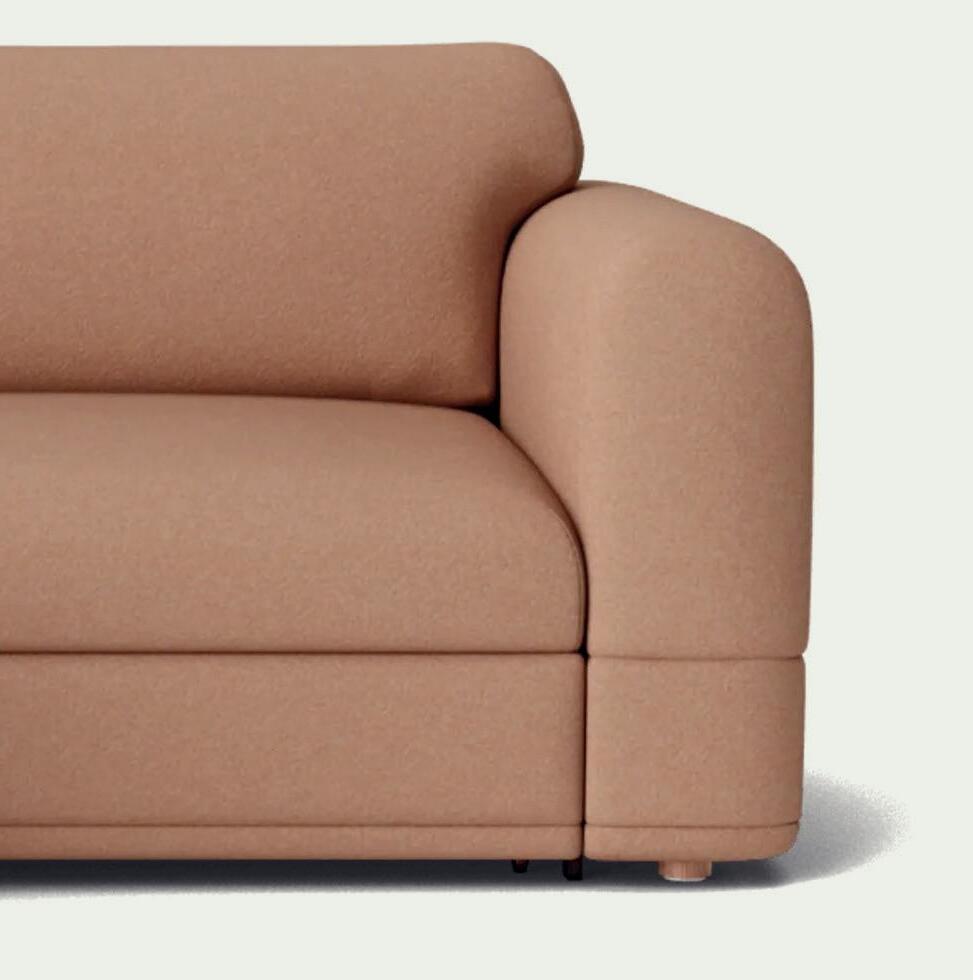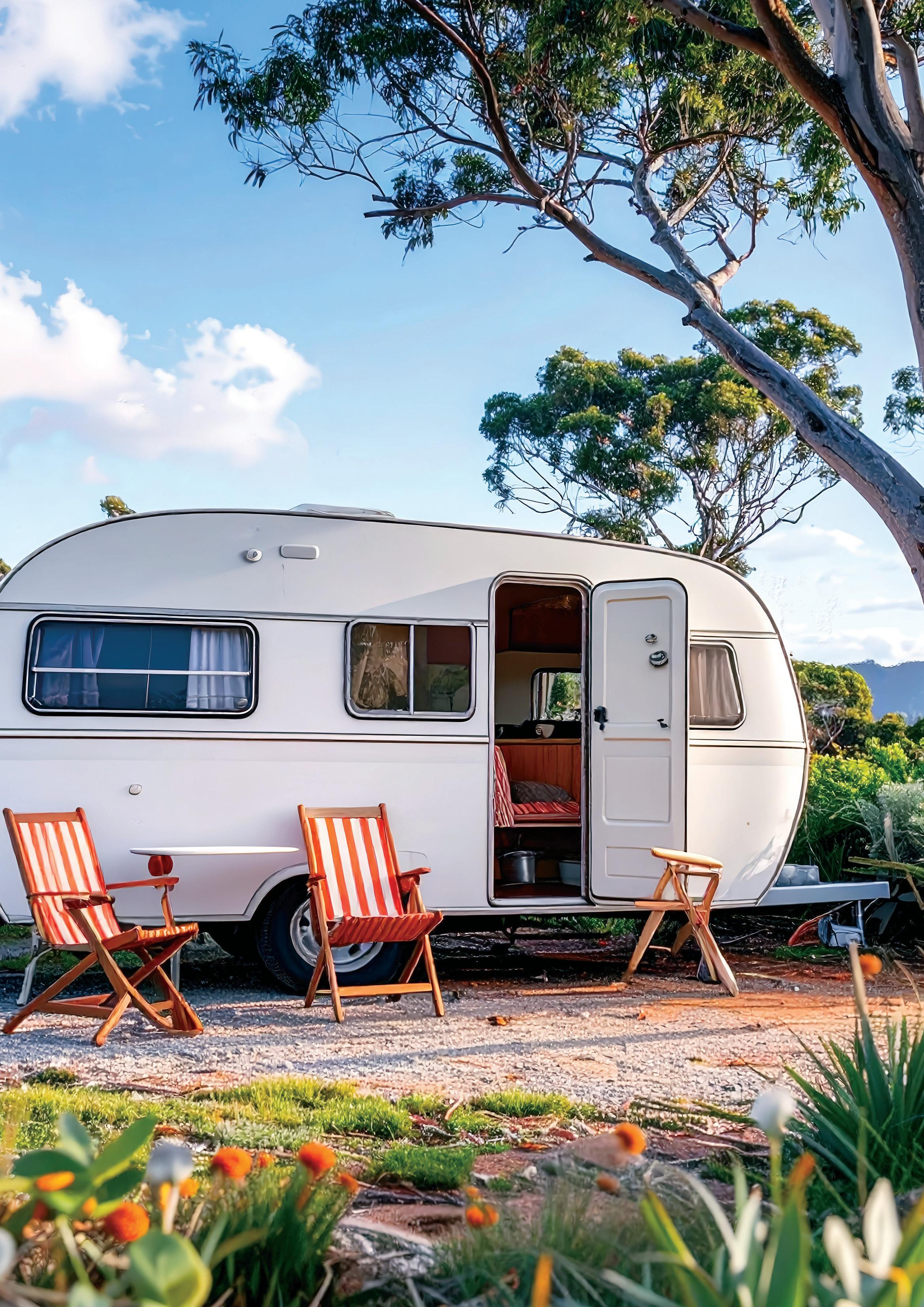

2025 CARAVAN & HOLIDAY PARK INDUSTRY SPOTLIGHT


On the road and ahead of the curve: Stuart Lamont on the Caravan Industry’s next big adventure
By Mandy Clarke, Editor
When it comes to the art of the great Aussie roadtrip, few people understand the big picture and the fine detail quite like Stuart Lamont. As CEO of the Caravan Industry Association of Australia (CIAA), he’s steered the sector through boom times, market shifts and a global pandemic, all while championing the regions that form the beating heart of caravanning culture.
Fresh from the 2025 National Conference and the 10th State of Industry Report, Stuart sat down with me to unpack the highlights, challenges and opportunities shaping the future of Australia’s favourite style of travel.
A conference that’s much more than just a gathering
Stuart, what were your personal highlights from this year’s National Conference, and can you give us any clues about next year?
“There are many reasons people attend conferences, but we’ve worked hard to create something more than just a traditional gathering. We want it to be an experience. We put ourselves in our delegates’ shoes to deliver real value for the time and investment they make.
“This year, we offered everything from networking, knowledge sharing and business development to golf days, ‘choose your own adventure’ masterclasses, themed

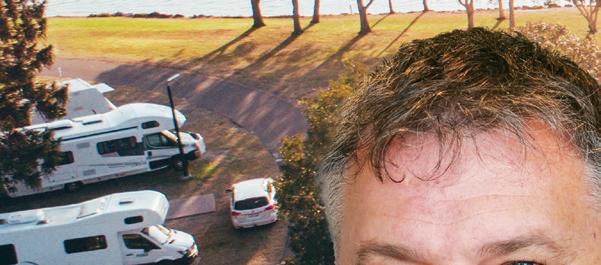
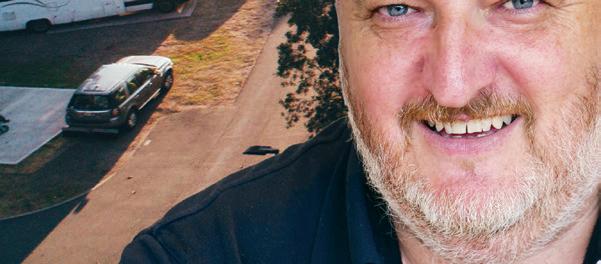
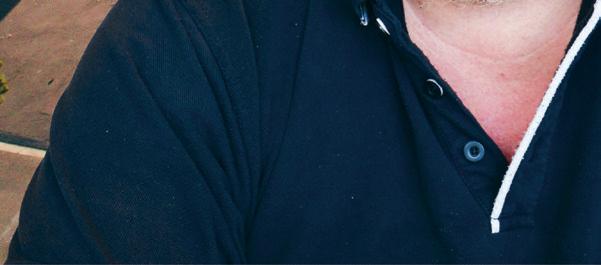
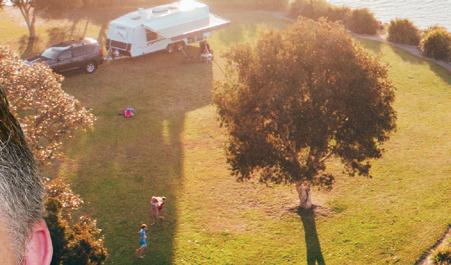
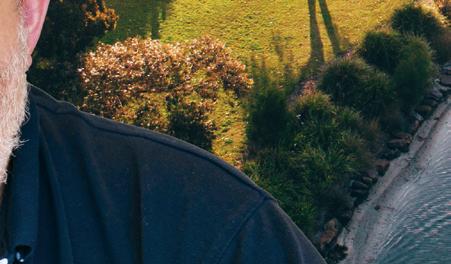
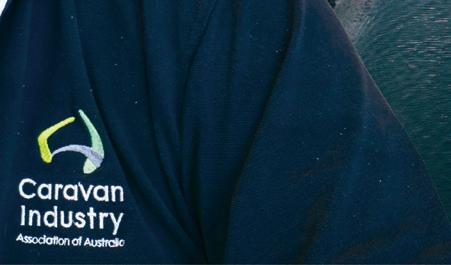
Stuart… unpacks the highlights, challenges and opportunities shaping the future of Australia’s favourite style of travel
evening events, a drone and fireworks display, exclusive luncheons with Australian sporting legends, informative breakfast sessions, and even fortune telling and massages.
“More than $15,000 in prizes were up for grabs, adding excitement and giving people an extra incentive to do business with our important trade exhibitors. The generosity of our industry always shines through, and I am particularly proud that we raised over $50,000 for Pankind, supporting pancreatic cancer awareness.
“But above all, our biggest measure of success is that people left with renewed enthusiasm for our incredible sector. Judging by the feedback from our more than 1000 delegates, we certainly achieved that mission.
“As for next year? Expect bigger and even better!”
10 years of insights and counting
The 10th State of Industry Report is a big milestone. What’s the standout message?
“It might sound like a cliché, but the caravan and camping
industry remains remarkably resilient. We’re going through a natural rebalancing after the huge growth during COVID, not a collapse. Businesses are adapting, consumer behaviour is settling at levels well above pre-pandemic norms, and the industry continues to outperform many others.
“Reports like this—alongside more than 100 industry reports we publish each year—help businesses make informed decisions and keep us responsive to changing market trends.”
Why more Aussies are hitching up
Caravan and camping trips are up 38 percent since 2014. What’s fuelling this growth?
“There’s been a fundamental shift in how Australians see domestic travel. More people want flexible, authentic experiences that connect them with nature, family and friends, and caravanning delivers that.
“COVID accelerated these trends, but the trajectory was already there. Today, we have an incredible range of vehicles and experiences for every budget and lifestyle, from basic camper trailers to high-end motorhomes. Travellers can choose their comfort level without losing the freedom and connection at the heart of caravanning.”
Regional Australia at the core
How is the industry supporting regional Australia, where most trips take place?
“Regional Australia is the heartland of our industry. We continue to push for the economic benefits of caravanning to be recognised and supported by governments.
Stuart Lamont, CEO, Caravan Industry Association of Australia (CIAA)
“It’s not enough for ‘regional dispersal’ to be just a buzzword. We need action. We must go beyond rhetoric. These ideas must translate into meaningful action with measurable outcomes, and we know through collaboration that this is achievable.
“Our Million Dollar Roadtrip NT campaign, delivered in partnership with Tourism NT, not only supported the caravanning and broader drive tourism sectors but also engaged the wider tourism industry to encourage longer stays and more local spending. The result was a tangible uplift in performance, with bookings boosted by 22 percent in a soft market.
“Our Road to a Million campaign continues to generate tens of thousands of extra regional overnight stays every year. These campaigns prove that genuine collaboration can deliver real, measurable results for rural communities.”
Meeting new traveller expectations
The 30 to 54 age group now leads the charge. How should operators cater to this segment?
“This group is looking for immersive, personalised experiences, not just a place to sleep. Families want adventure and activities, couples want unique getaways, and professionals need work-friendly spaces for longer stays.
“Parks are already adapting with adventure playgrounds, guided nature walks, premium cabins and curated local experiences. Digital expectations are high, with seamless booking, easy check-in and reliable wifi now non-negotiables.
“Most crucially, this group is willing to pay a premium for quality. More and more operators are investing in experienceled enhancements, which generate strong potential for increased revenue.”
Winning back the Grey Nomads
There’s been a slight drop in the over-55 market. How can operators reengage this loyal group?
“Some of this is down to the
return of international travel—a bit of ‘revenge’ travel. Weather and infrastructure issues in the north haven’t helped either. Many older travellers are also staying closer to home to help family through tough times, so those longer trips have shortened.
“But they’re not abandoning the sector, they’re adjusting. Our job is to keep offering excellent value, clean and modern amenities, and a warm welcome. With the right approach, we’ll keep this important group coming back.”
Australia’s next EV charging network
You’ve said caravan parks could become Australia’s EV charging network. What progress is being made?
“It’s still one of our key policy platforms. We want to make sure drive holidays stay viable in a lowemissions future. While progress has slowed due to government policy on regional electricity transmission, we’re participating in research to stay ahead. Once the national fast-charging network is in place, caravan parks will be critical to making regional connectivity a reality.”
Priorities for 2026
What are CIAA’s biggest priorities heading into 2026?
“Our ‘Growth and Change’ policies help us stay responsive and deliver real value. That means promoting the lifestyle to new audiences, providing market intelligence, advocating for our industry, and offering compliance education and accreditation to lift professionalism.
“We never stand still. None of this happens without shared responsibility across the industry. When everyone pulls together, the positive results speak for themselves.”
A leader’s reflections
You’ve led the CIAA through big changes. How has your leadership style evolved?
“I keep it simple: don’t ask anyone to do something you wouldn’t do yourself, share a narrative people want to get behind, never stand still and say yes until it’s no. I’m blessed to have an incredible team that shares the vision. We’re constantly rolling out new tools, research and partnerships—
there’s always something in the works to benefit the industry.”
Which achievement are you most proud of?
“It’s hard to choose. From merging two national bodies to driving legislative reform that, while introducing more regulation, ultimately created a more competitive, robust and fair-trading environment, we’ve come a long way. We’ve gained consultative status with a United Nations committee to ensure international vehicle regulations don’t compromise our local industry, secured government funding for industry advancement, contributed to the development of industryfocused Australian Standards, rolled out accreditation programs that boost consumer confidence and safety, and launched future leaders initiatives to bring fresh perspectives into the boardrooms of tomorrow. Each of these accomplishments has meaningfully contributed to the strength of our industry and brought personal satisfaction along the way.
“But if I had to pick one, installing more than 800 defibrillators in caravan parks stands out. Two young children are alive today because a defib was there when it was needed. What price can you put on that?”
After a decade of industry reporting, what’s the biggest lesson?
“Data is everything. Ten years ago, we were flying blind. Now we have best-in-class research that guides our strategy and helps businesses make smart decisions.”
What keeps you pushing forward, even in tough times?
“I’m a deeply competitive person. The more challenges thrown my way—or the more people suggest something can’t be done—the more motivated and creative I become. With the right mindset, obstacles become opportunities for problem-solving and staying focused on outcomes.
“At my core, I believe most of us are driven by a desire to achieve and make a meaningful contribution. For me, that drive is tied directly to the success of this industry. There’s immense personal satisfaction in being
able to reflect at the end of the day and say, ‘I think the industry is in a better place because of the effort our team put in today.’”
And finally… Stuart’s happy place
If you could hitch up the van tomorrow, where would you go, and what’s your one must-have item?
“The beauty of Australia is that there’s something new around every corner. I love getting off the beaten track and enjoying the hospitality of small country towns. Every trip is different.
“From WA’s Old Tin Horse Highway to Legerwood’s tree carvings, NT fishing trips, the Parkes Observatory or a country race meeting—there is genuinely something for everyone. And there’s no better way to experience it than through caravanning and camping.
“My must-have? While I wish I could say it was a sentimental keepsake, truth is, it’s my mobile phone. It keeps me connected, gives me access to news, travel ideas and practical tools, and allows me to keep one eye on what’s happening back home, whether I’m travelling for business or pleasure. Sorry!”
A future full of possibility…
For Stuart Lamont, the open road is more than just a personal passion—it’s a symbol of what makes Australia’s caravan and camping sector so special: freedom, resilience and connection.
With an eye firmly on the future, Stuart and his team continue to champion regional communities, smarter data, new experiences and a more sustainable road ahead. It’s an industry that has weathered challenges, welcomed new generations and kept its spirit alive through thick and thin.
One thing’s certain, whether it’s families chasing adventure, grey nomads rediscovering old haunts or first-time campers finding their happy place, the next chapter of Australia’s caravanning story promises to be just as memorable as the last. And with Stuart and his team at the wheel, you get the feeling the best trips are still yet to come.
“It’s all about the people”:
Emily Byrne shares her vision for Holiday Parks New Zealand
Emily Byrne is the new Chief Executive of Holiday Parks New Zealand (HPNZ). With her strong tourism background and genuine passion for the industry, she’s on a mission to celebrate the unique charm of Kiwi holiday parks and keep the sector thriving. She spoke with AccomNews about her journey, early insights and what’s ahead for members.
Congratulations on your appointment, Emily. What led you to this role?




around New Zealand. They’re a classic Kiwi experience with something for everyone. I’m excited to share that story because many people still don’t realise how many parks have roofed accommodation that can rival motels or Airbnbtype accommodation.
How do you like to unwind?
I love crafts and being creative, especially working with clay. I’ve done night classes for years. I also love cooking and baking with my two kids, usually whipping up something for school lunchboxes.
What are your early impressions of the industry?
It’s all about the people. Everyone has been so welcoming. There are challenges, but there are also a lot of opportunities. Right now, we’re running the Holiday Parks NZ Awards and it’s been amazing reading about all the improvements and inspiring work happening in parks around the country.
What are your top priorities as CEO?
How important is working with your Australian counterparts?
Very important. Some of our parks are owned by Australian companies like Tasman and Hampshire, so we already get good insights that way. I’ve really enjoyed connecting with people at the CIAA and CPAQ conferences too. We’re on similar journeys and sharing what works helps us all.
What stood out to you from the Australian industry convention?
Thank you! I spent six years at Tourism Industry Aotearoa as Director of Marketing, Partnerships & Events, so I already knew the industry well and had a real passion for it. I’d also worked closely with outgoing HPNZ Chief Executive, Fergus Brown and admired what he was doing.
I’ve been lucky to travel around NZ and have visited nearly 50 parks so far. Wellington is my favourite city, but really, I just feel grateful to live in such a beautiful country with so much to discover.











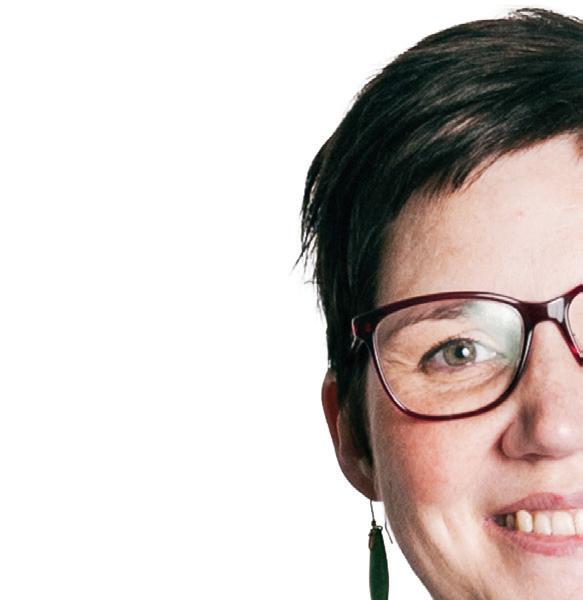
Getting out and meeting more members is a big priority. Visiting 50 parks so far has given me so much insight, but I want to see more. We’re also reviewing our strategy and collecting feedback to help shape our next steps. Our team is small and quite new, so we’re working on setting up better systems and processes to make the most of our resources.
Seeing the sheer number of caravans compared to motorhomes—it’s completely the opposite here. I was also impressed by how deep their data goes and how they use it to support the sector.
What should HPNZ members know about your leadership style?
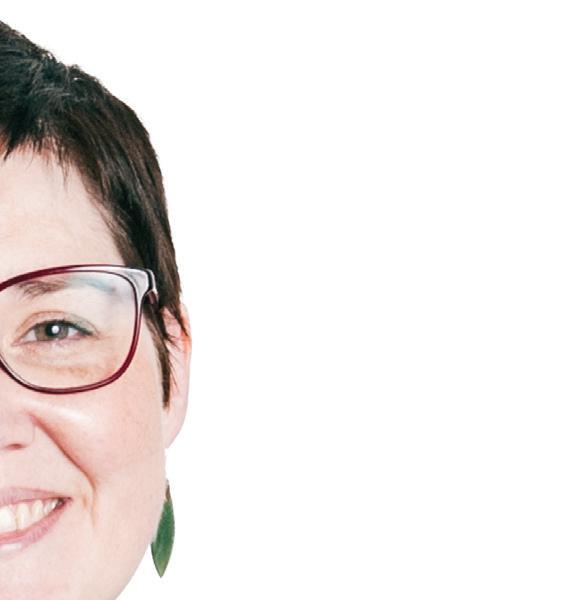
biggest opportunities and
What do you see as the challenges ahead? challenges.
aren’t just about tents and



recently, I was CE of a small
After COVID hit, I worked at the Ministry for the Environment, then was seconded to the Department of Prime Minister & Cabinet for Unite Against COVID. Later, I moved to Stats NZ as Senior Manager, Marketing & Communications until my second child arrived. Most recently, I was CE of a small charity. When this role came up, I was so excited to return to tourism.
What drew you to the holiday park sector?
I grew up in the UK, going to caravan parks with my family, and when I moved here, I loved visiting holiday parks


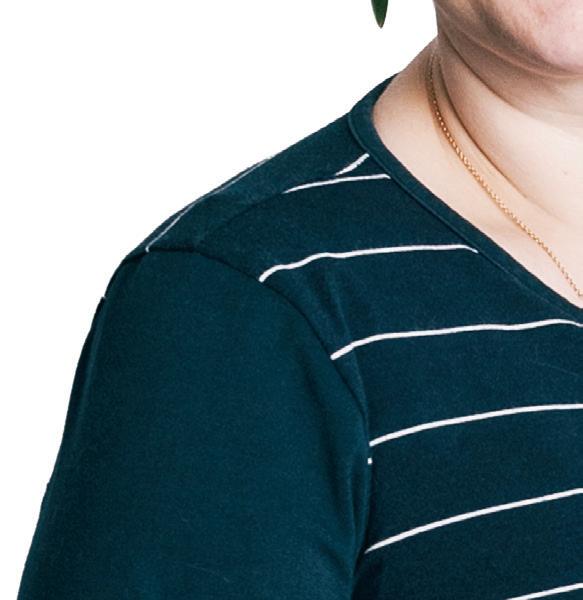
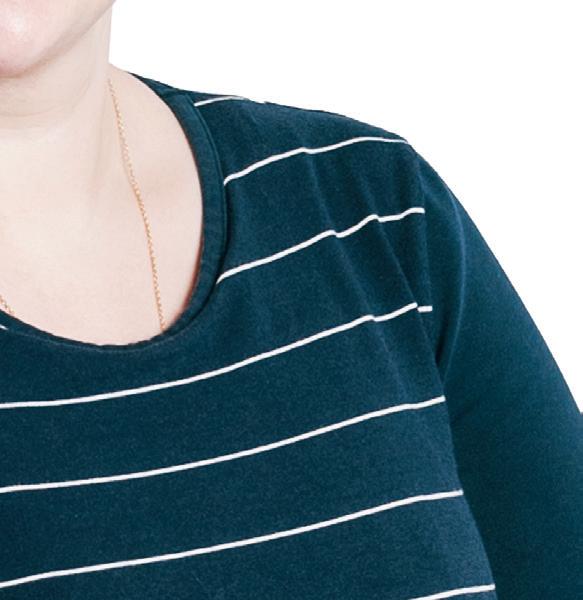
Emily Byrne
Freedom camping, compliance costs, infrastructure and staffing are top challenges. But there’s a real opportunity to show that holiday parks aren’t just about tents and caravans. Many parks now offer accommodation that can match or beat motels and other options.
I’m open and approachable. Members are welcome to call, email or pop in for a coffee if they’re in Wellington. I really value hearing what matters to them. My team and I are here to help make running a holiday park that bit easier.
How can the sector keep attracting the next generation of guests and operators?



Storytelling is key. Many people have childhood memories of holiday parks. We need to keep sharing those stories and reminding people how special that experience is for families.
For operators, tourism offers so much more than a nine-to-five job. It’s hard work but rewarding because it’s all about people.
I love the beautiful Māori whakataukī (proverb): “he aha te mea nui o te ao? Māku e kī atu, he tangata, he tangata, he tangata.” What is the most important thing in the world? It is people, people, people.
Boost guest satisfaction with real-time feedback
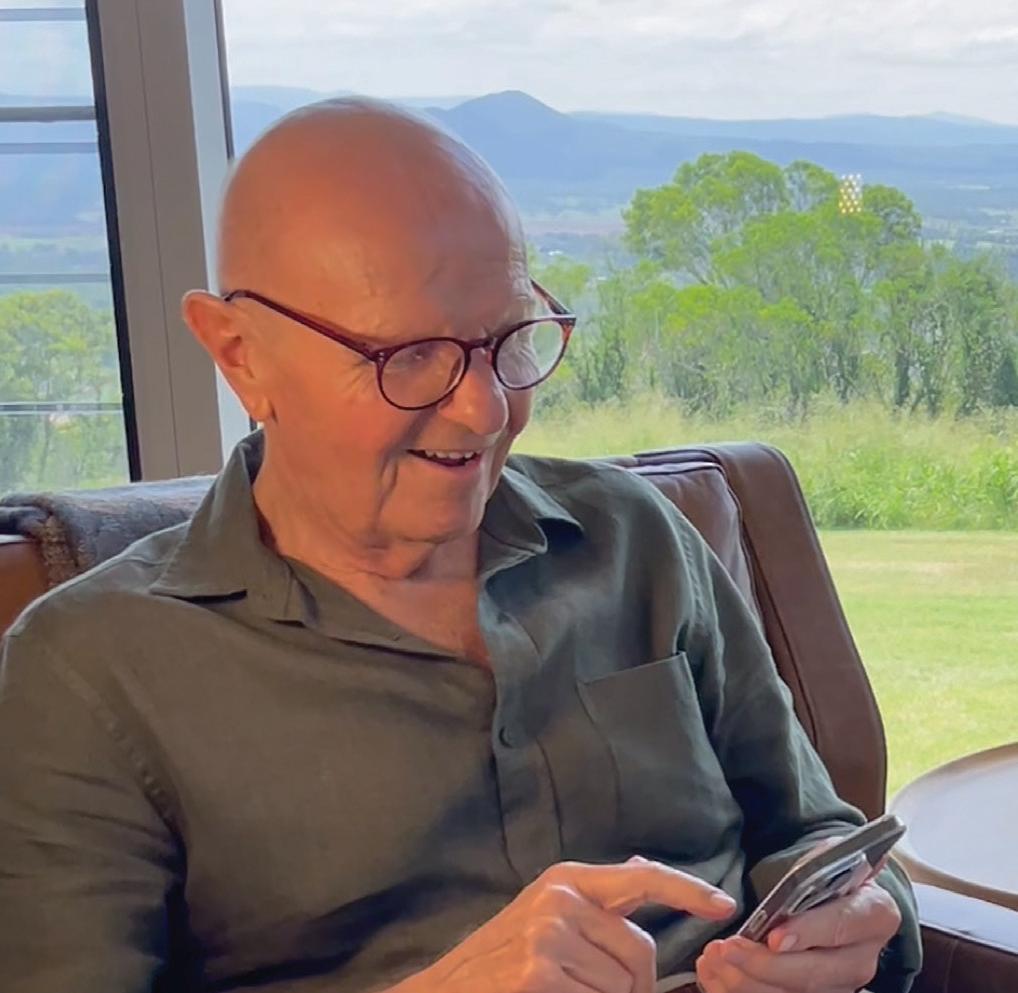

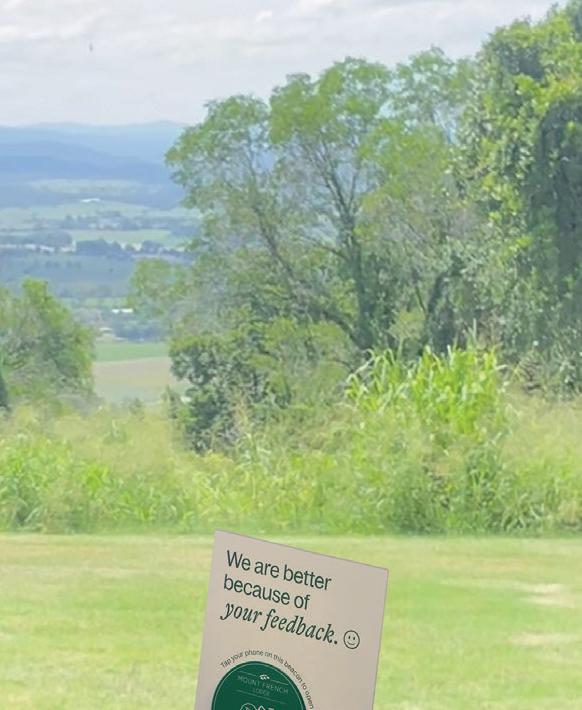
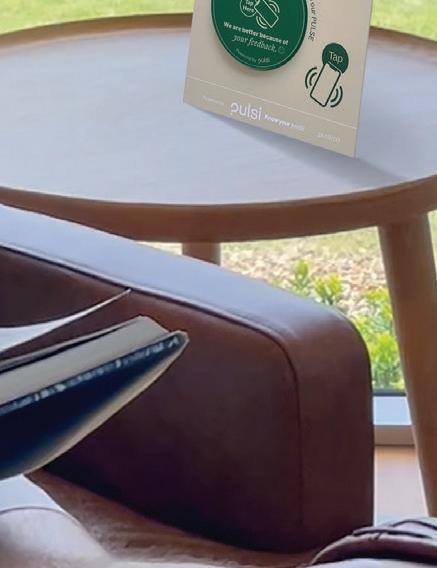
Don’t wait until you see a damaging review online.
Know about issues as they happen, so you can resolve them immediately, improve guest satisfaction and increase future bookings.
Designed for a mobile first world, Pulsi is the fast, easy, and engaging way for guests to reply digitally without any app or download.
















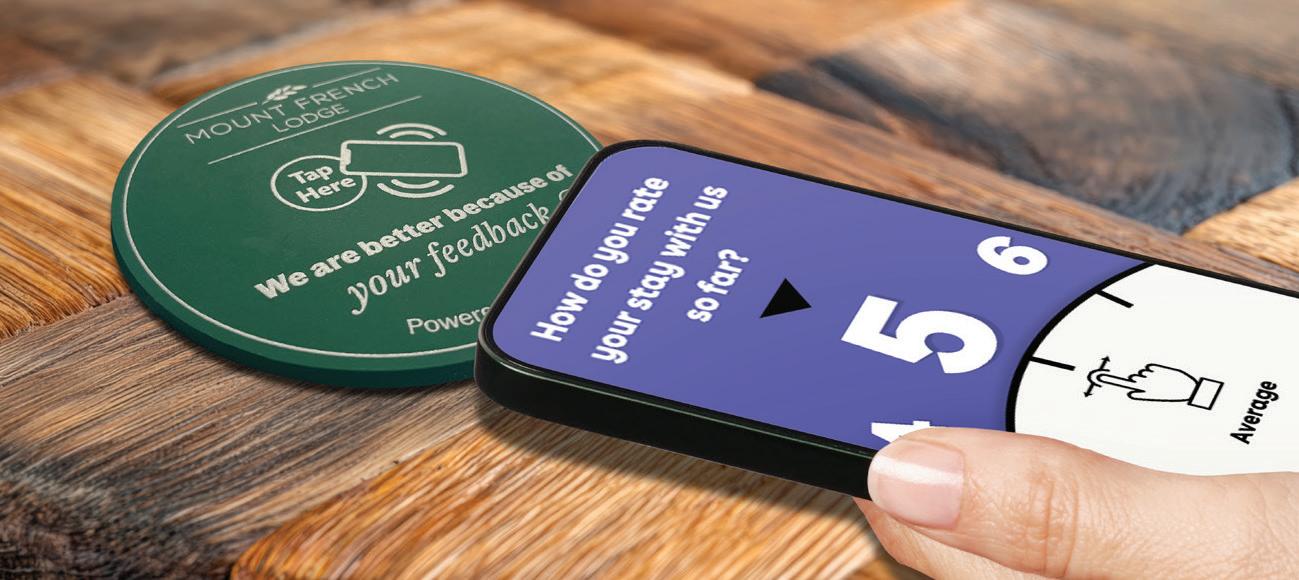


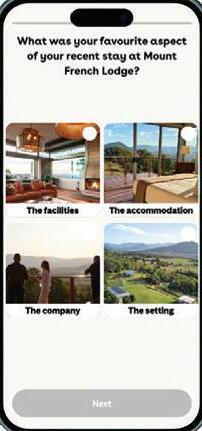


Creating spaces where everyone belongs
At Lake Mac Holiday Parks, inclusion isn’t just a policy; it’s a guiding principle woven into every interaction. Coordinator Garry Ellem shares how the team is rethinking what it means to welcome all guests, and why challenging norms is key to creating truly inclusive holiday experiences.
Inclusion is a core value at Lake Mac Holiday Parks, guided by the principle: “treat each person as a person.” Like the blind auditions on The Voice, where judges focus solely on the voice, true inclusion means setting aside personal biases and seeing people for who they are. Challenging bias requires us to challenge not only our team but, at times, our customers too. To help build empathy and insight, our administration and grounds staff participate in wheelchair and vision impairment simulations to gain first-hand understanding of the challenges some of our
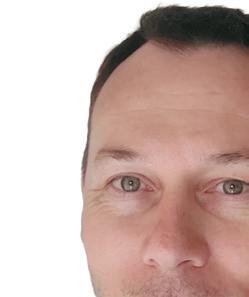
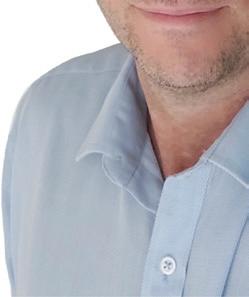


guests face. We’ve also introduced deaf awareness and Auslan training—delivered by a deaf presenter—which drives home the importance of respect and understanding across our team. Our next focus: supporting our LGBTQIA+ guests. Caravan parks have traditionally reflected more conservative Australian values, and some visitors still express discomfort seeing same-sex couples holding hands at the camp kitchen or cuddling by the pool. Sadly, this can lead to travellers hiding who they are during their stay. According to Welcome With Pride, 60 percent
Michelle Weston:
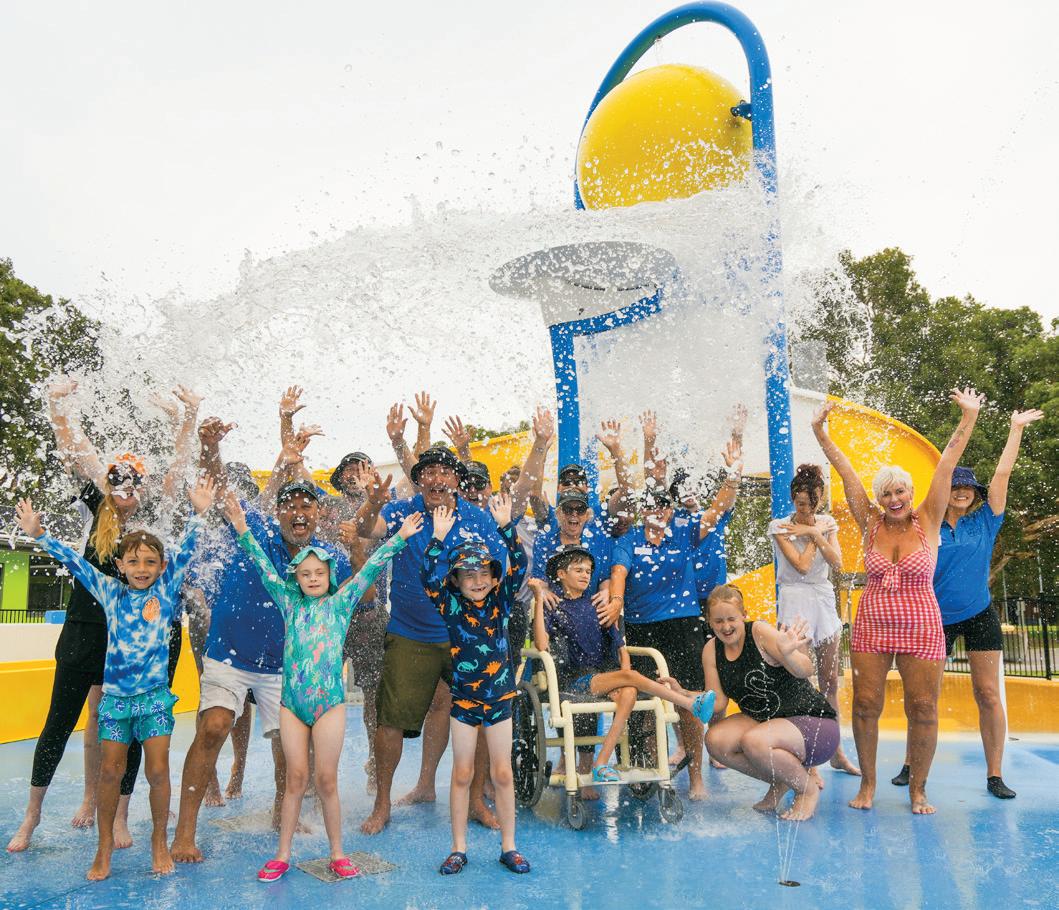
of LGBTIQ+ travellers go “back into the closet” while on holidays. At the same time, 88 percent say their interaction with staff is the most important factor in creating an inclusive holiday experience.
That presents a real opportunity. Our team is committed to learning how to better welcome and support a broader cross-section of
Championing Queensland’s caravan parks
Michelle Weston is the Chief Executive Officer of the Caravan Parks Association of Queensland (CPAQ), the peak industry body representing the state’s caravan and residential parks.
With a strong background spanning tourism, policy, and industry advocacy, Michelle leads a small but high-impact team delivering practical support, strategic partnerships, and robust representation for more than 400 member businesses across Queensland.
Since stepping into the CEO role, she has driven significant growth in member engagement, modernised the association’s operations, and worked tirelessly to highlight the value of caravan parks as both vital tourism assets and an essential part of Queensland’s housing solution.
Passionate about empowering park owners, cutt ing red tape, and sharing the real stories of regional Queensland, Michelle brings energy, clarity, and a sharp focus on outcomes to everything she does — whether it’s hosting regional meetings, influencing policy, or casually squatt ing more than 100kg in her spare time.
guests. We’re expanding the welcome statement at every park reception so it’s clear from the outset: everyone is welcome, regardless of ethnicity, culture, religion, ability, identity, or sexual orientation. And now, onto our next challenge—retrofitting our amenities blocks to ensure every person is treated as a person.
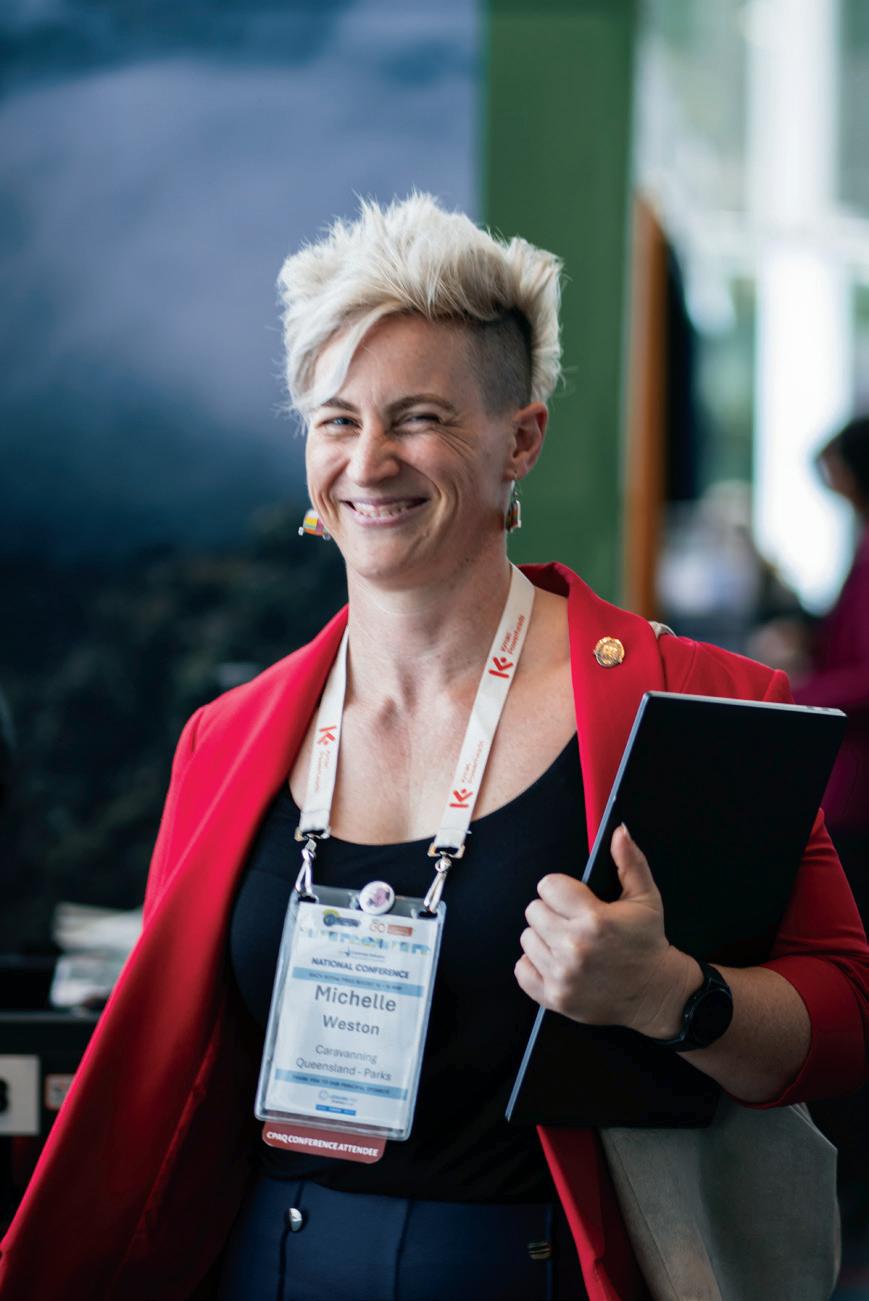
Garry Ellem
Lake Mac Holiday Park
Michelle Weston
Record attendance, big ideas and generosity defined this year’s Caravan Industry National Conference
By Mandy Clarke, Editor
In 2025, the caravan and camping sector once again demonstrated its strength, resilience and sense of community at this year’s National Conference, organised and delivered entirely by the dedicated inhouse team at Caravan Industry Association of Australia (CIAA).
As always, CIAA took over RACV Royal Pines Resort on the Gold Coast, transforming it into a hub of big ideas, meaningful connections and plenty of fun for more than 1000 delegates and over 130 trade exhibitors.
The energy across the resort was unmistakable. From the opening day’s golf tournament and breakfast sessions with Aussie sporting legends to themed evening functions and a spectacular drone and fireworks display that lit up the night sky, there was never a dull moment. Roaming caricature artists, fortune tellers, and even pop-up massage stations added those extra touches and surprises delegates have come to expect, helping them relax and mingle between sessions.
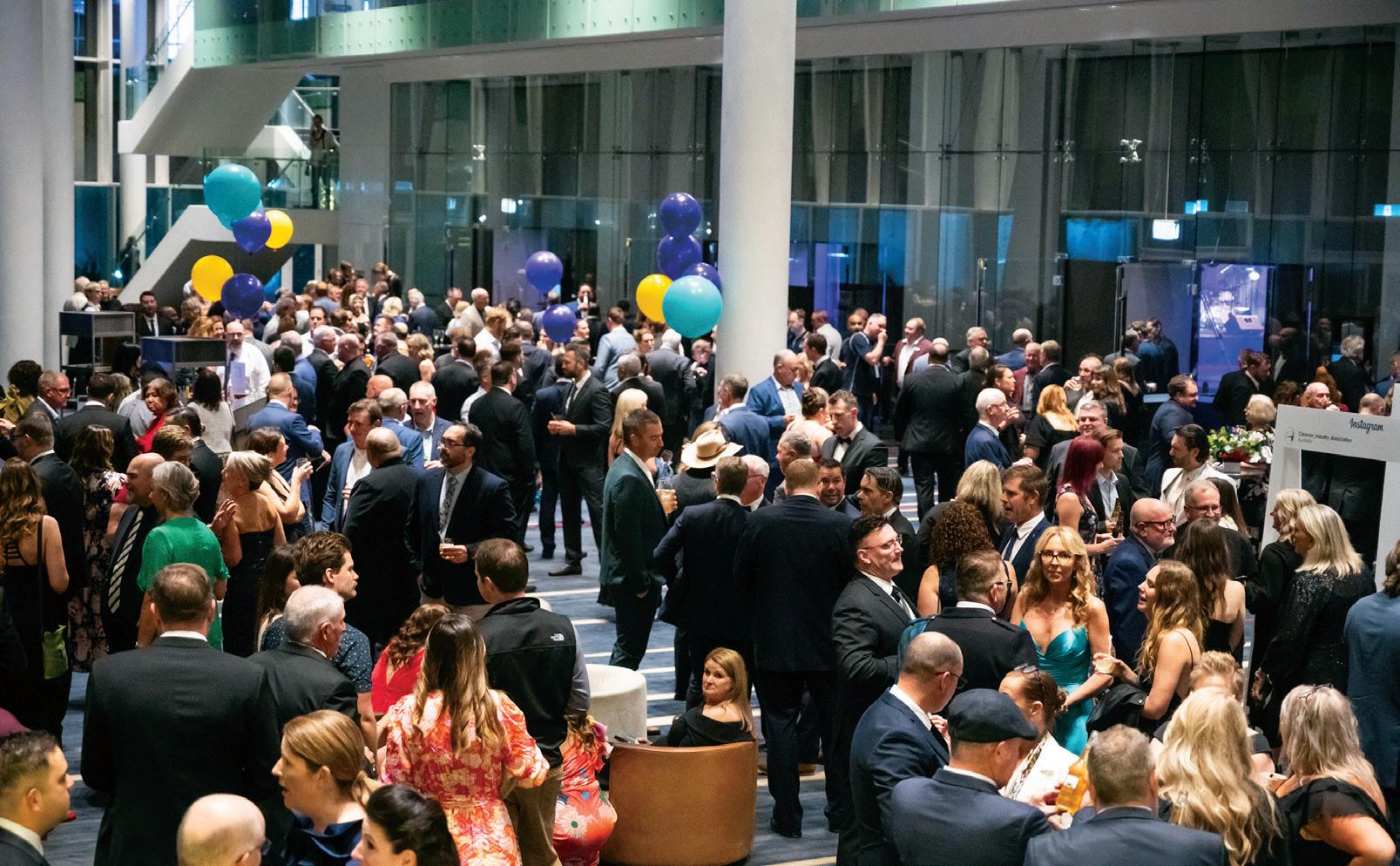
Stuart Lamont, CEO of CIAA, said the event remains so special because the association’s dedicated in-house team always put themselves in the shoes of their members.
“There are many reasons why people attend conferences, but in recent years we have deliberately shaped ours to be more than just a traditional gathering. We want it to be an experience,” he said. “We ask ourselves: Does this respect the
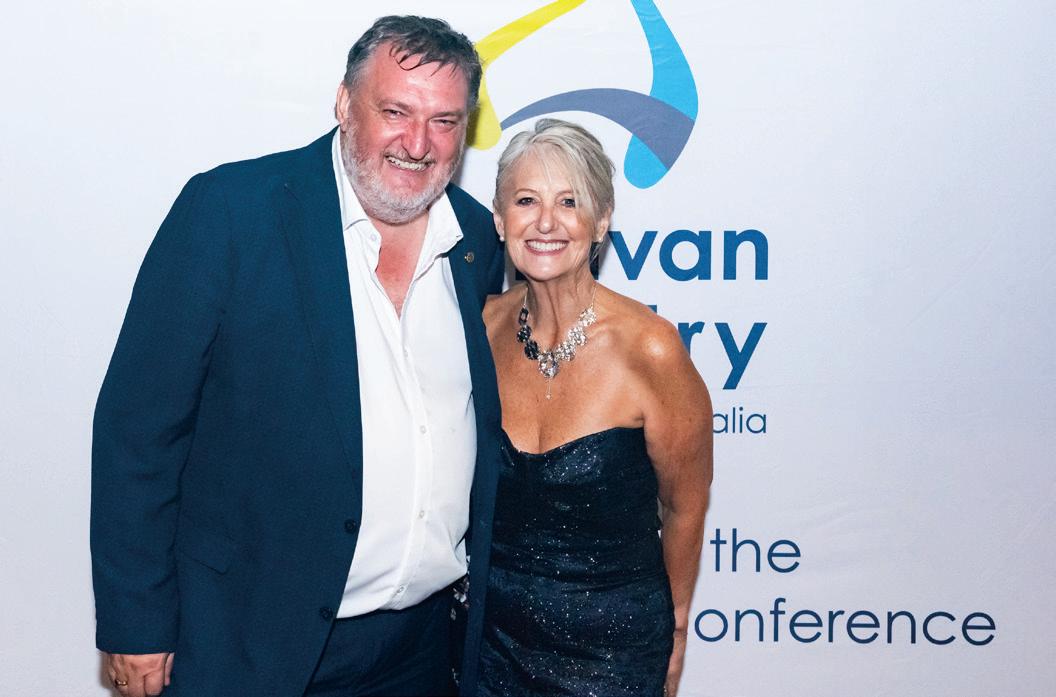
time, investment and passion of our delegates? And does it deliver value they can take back to their businesses?”
This year’s program certainly delivered on that promise, with two and a half days of “choose your own adventure” professional development streams, hands-on masterclasses and a buzzing trade exhibition hall showcasing the latest products, services and ideas. More than $15,000 in prizes were up for grabs, adding
extra incentive to connect with exhibitors and build relationships that drive growth. A milestone moment was the release of the 10th edition of the State of Industry Report—a comprehensive snapshot that continues to guide the sector’s direction and shape future opportunities. Its findings sparked plenty of valuable conversations among operators, suppliers and policy leaders alike.
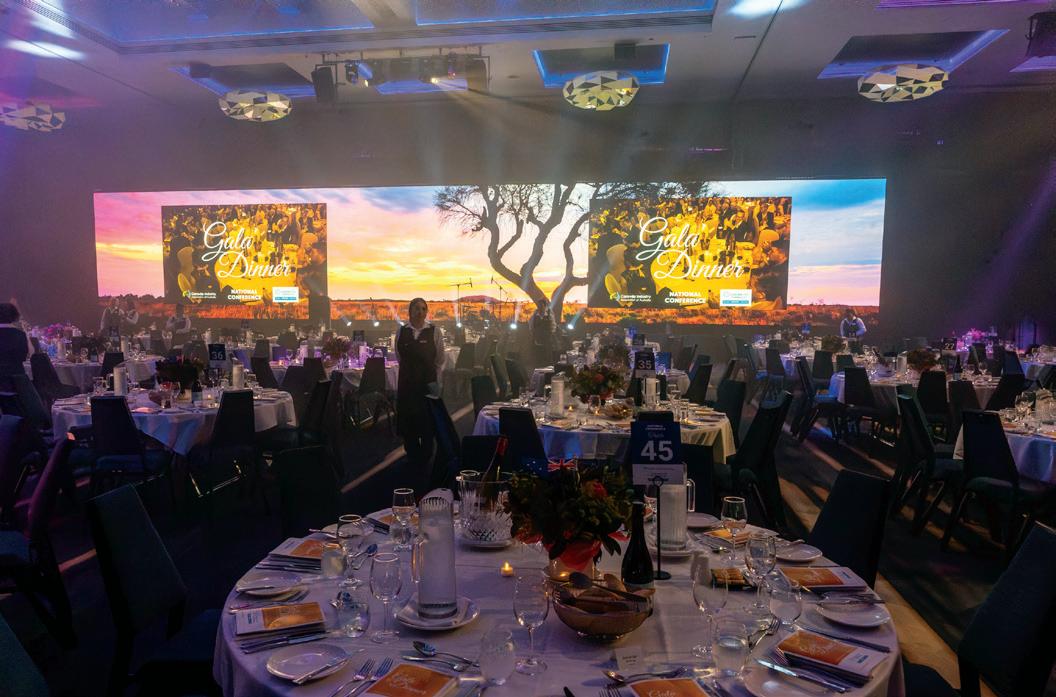
Image: License Caravan Industry Association of Australia
Images: License Caravan Industry Association of Australia
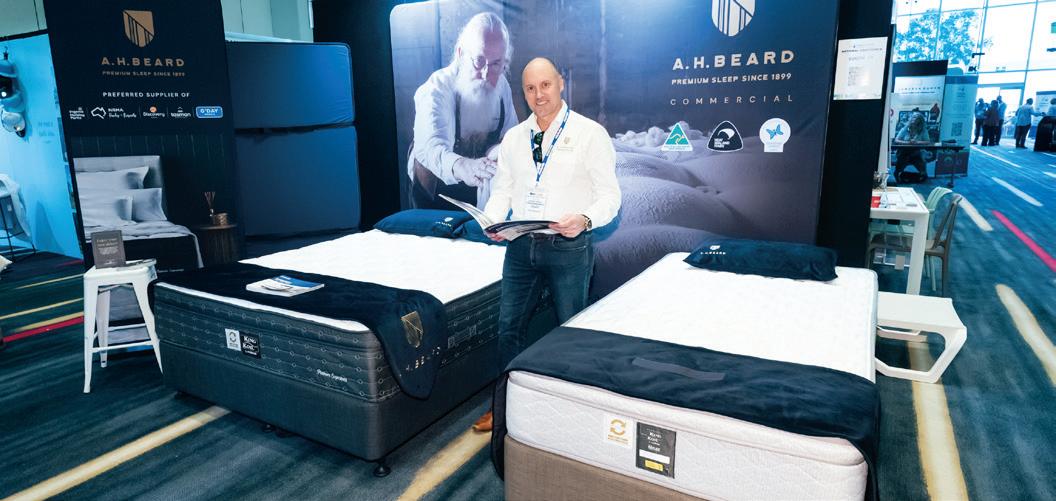

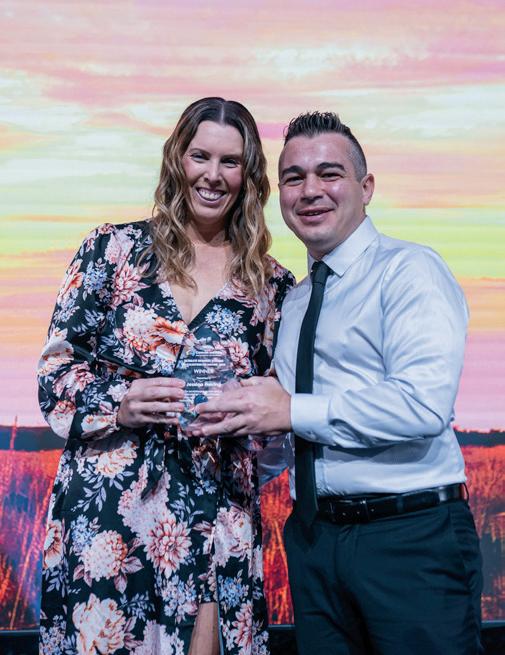
The conference culminated in a glamorous Gala Dinner, where the 2025 Caravan Industry Awards celebrated the sector’s brightest stars. The evening began with a dazzling drone show, featuring images of campfires, caravans and beach umbrellas, setting the stage for a night of recognition and celebration.
The prestigious Eric Hayman OAM Award for Excellence was awarded to two outstanding
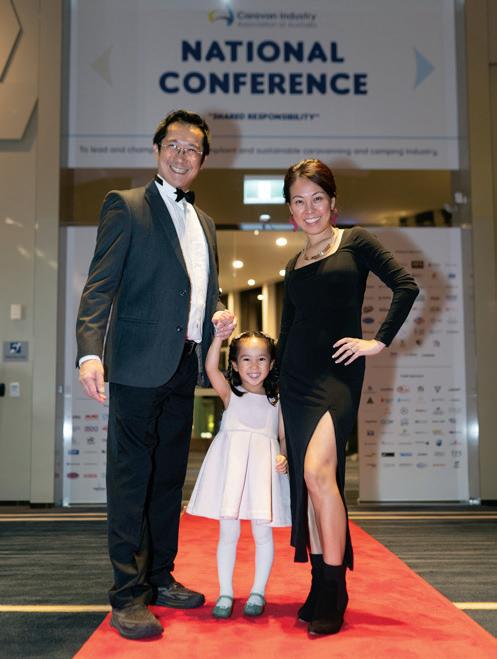
individuals: Julie Pernecker, honoured for her decades-long dedication to addressing the insurance needs of Australia’s caravan holiday parks, and the late Theo Whitmont, recognised posthumously for his extraordinary leadership and vision that have helped shape the industry.
Other notable awardees included Holiday Brands, which received the Gerry Ryan OAM Award
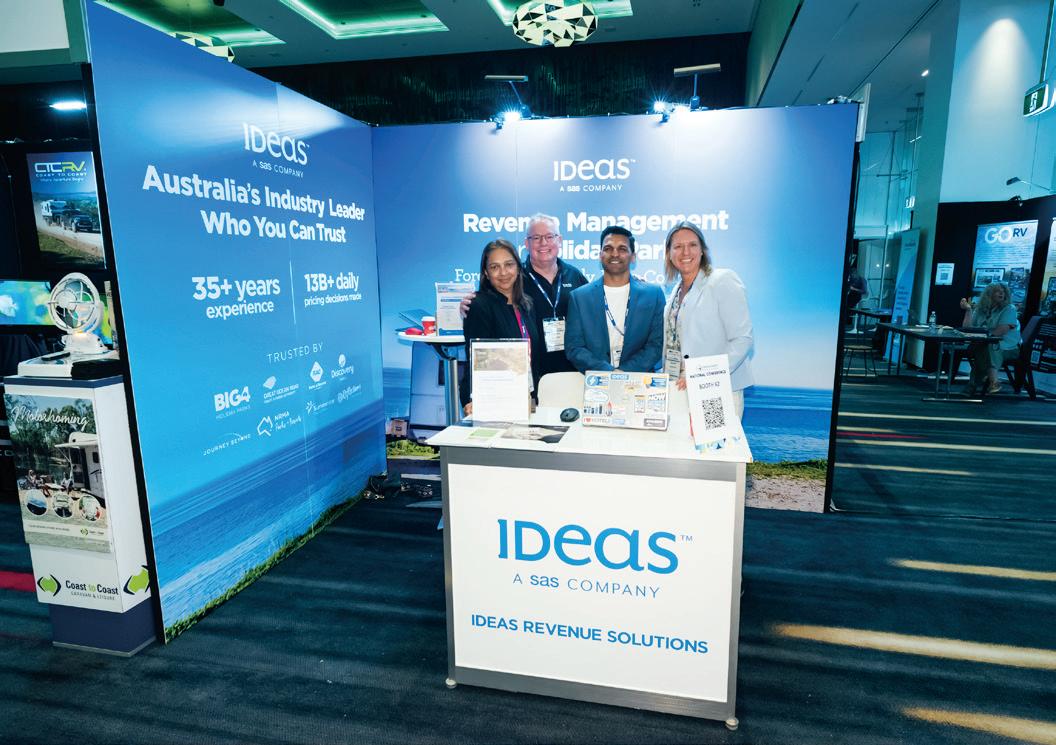
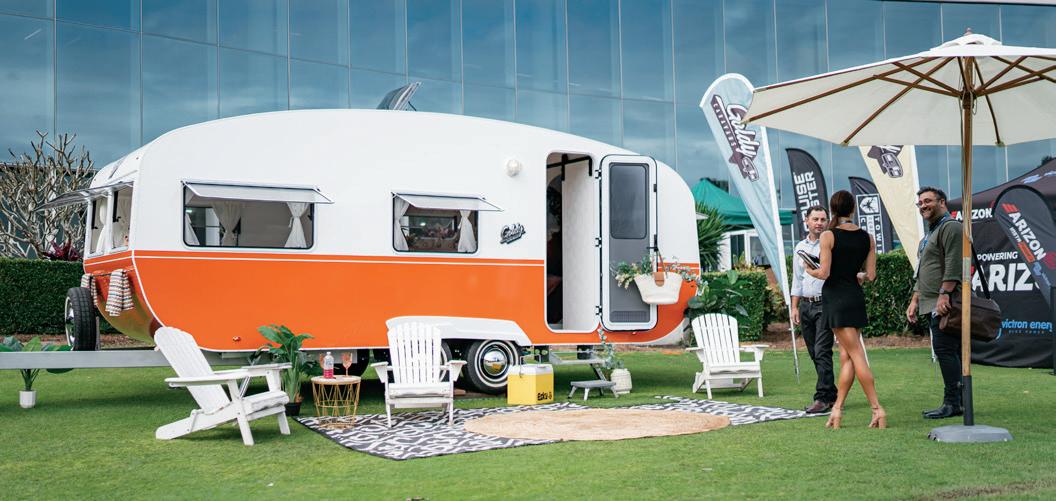
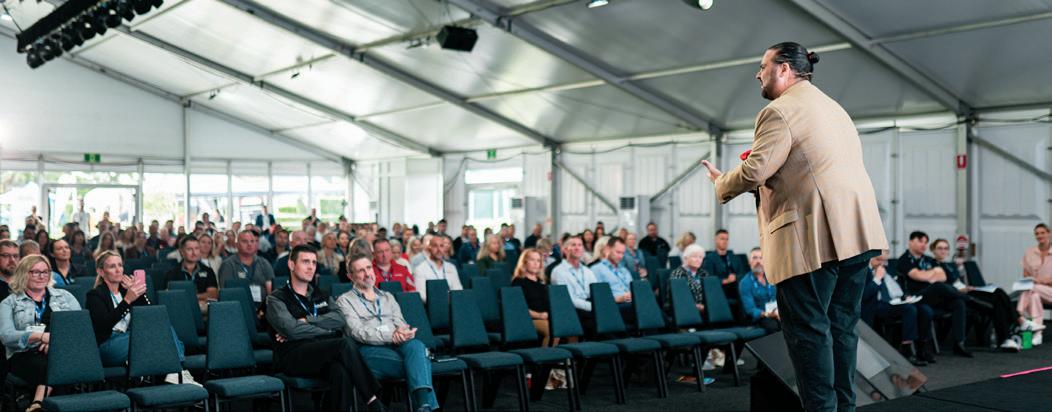
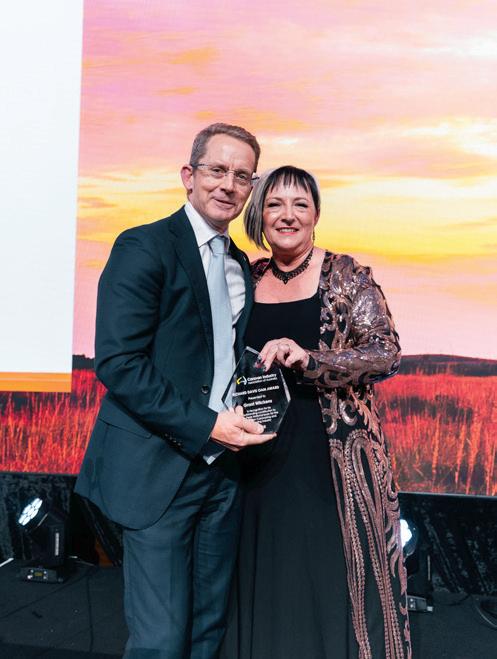
for Innovation for its AI-driven marketing tools; former CIAA Chair Grant Wilckens, who was presented with the Richard Davis OAM Award for his exceptional leadership during times of growth and challenge; and Amanda Dempster of Holiday Brands and Stanthorpe Holiday Park, who took home the thl, Future Leaders Award, along with a $10,000 scholarship.
The inaugural Ultimate Business
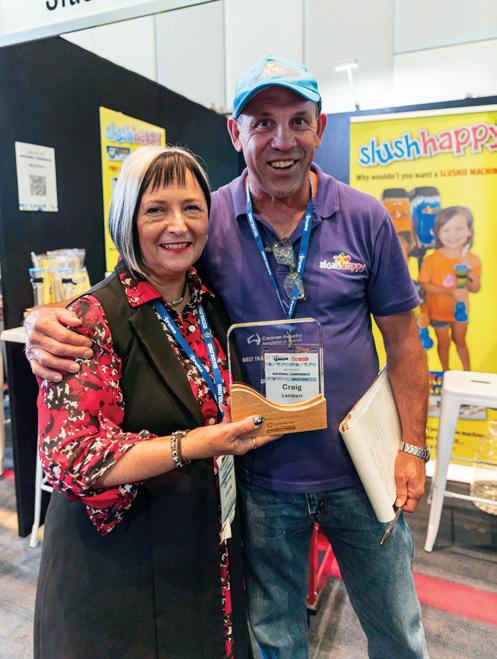
Systems—RV Salesperson of the Year Award went to Jessica Herring of True North RV in South Australia, recognised for her exceptional customer service and product knowledge.
The Christie Barbecues Community Engagement Award was presented to NRMA Parks and Resorts and Roger Fuller of Yarrawonga Manufactured Housing for their outstanding work in building strong community ties.
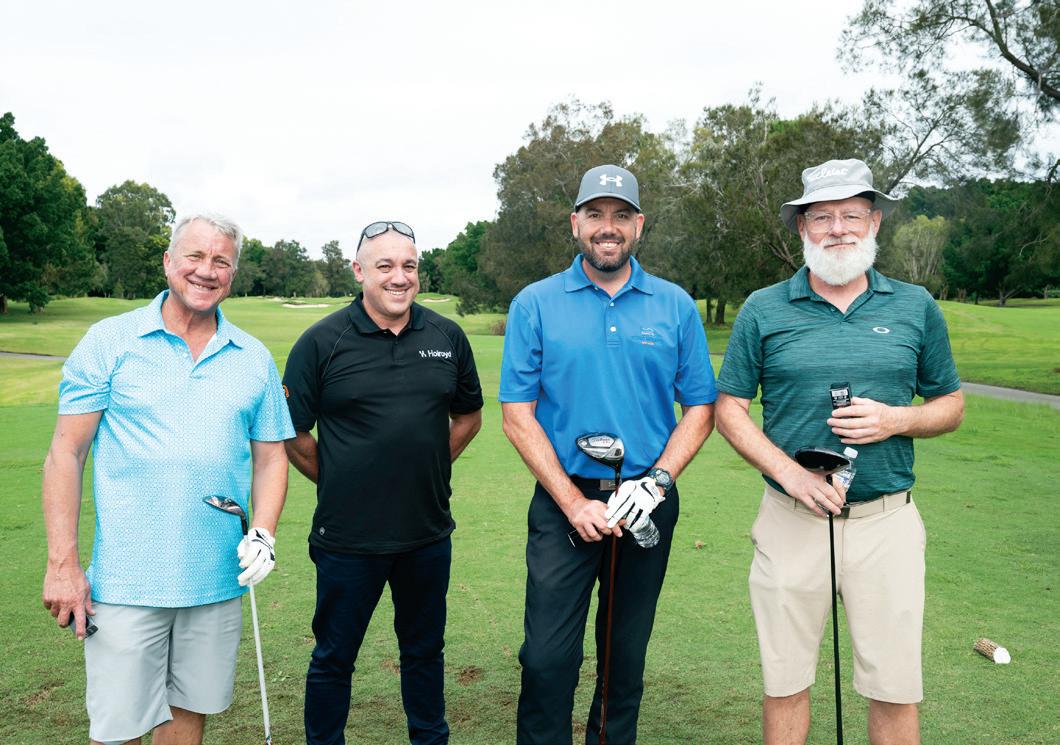
Images: License Caravan Industry Association of Australia
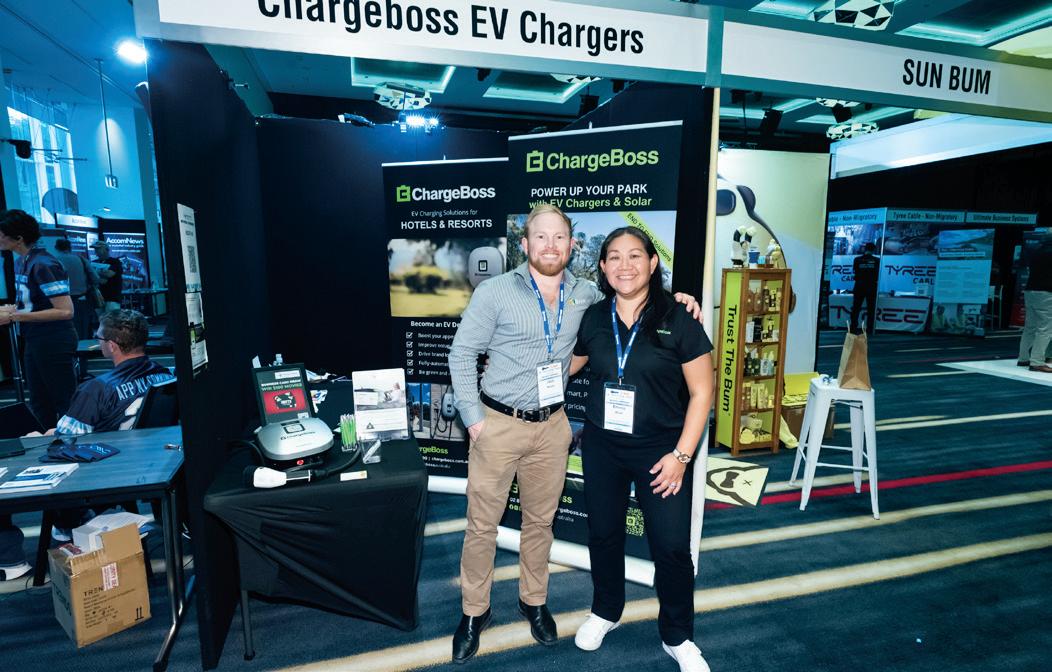
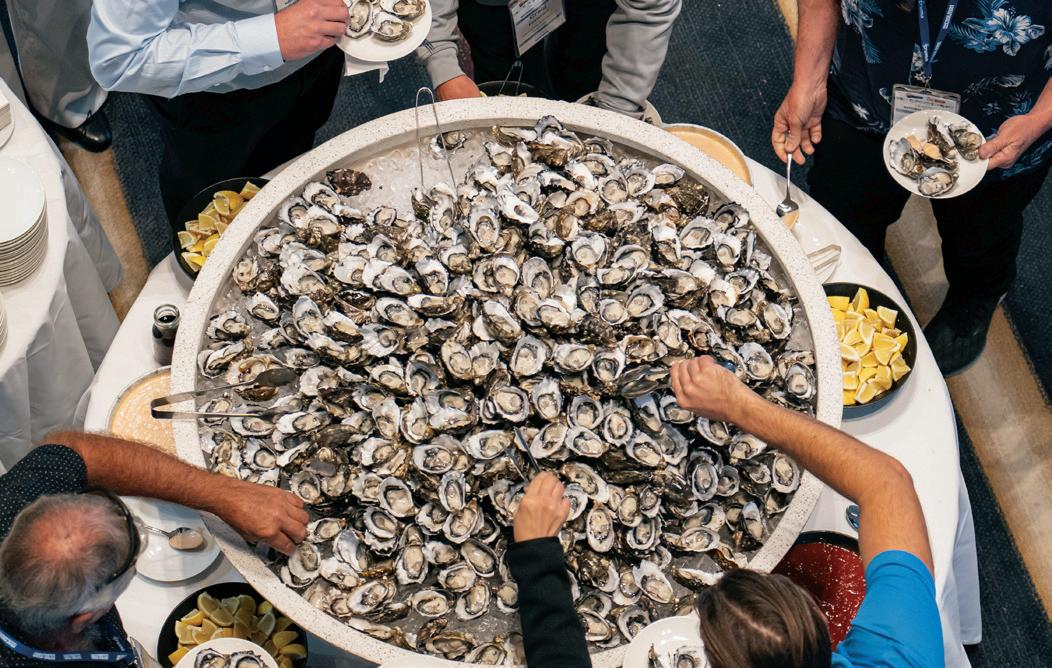
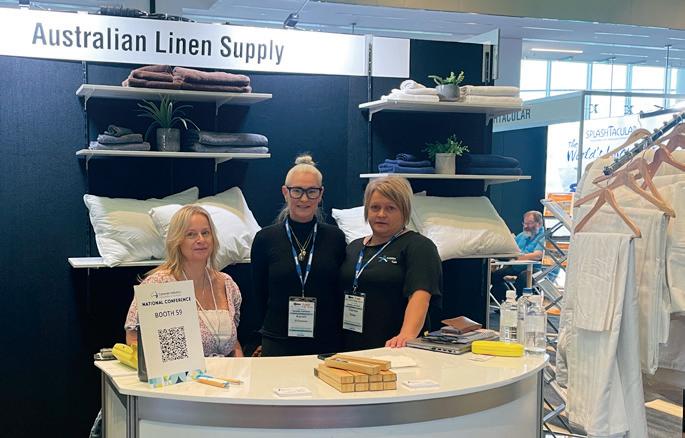
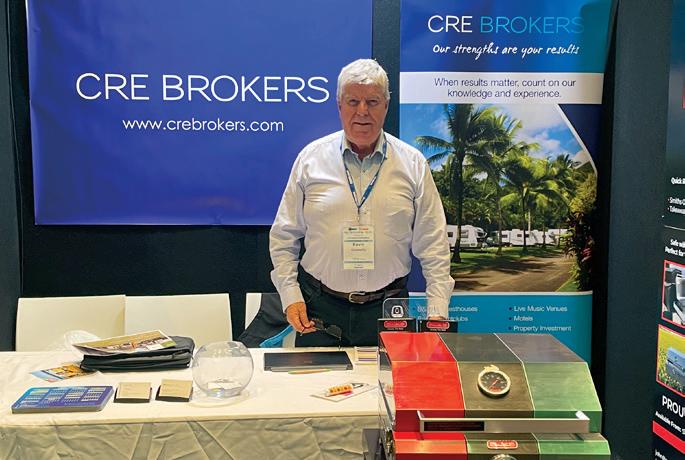
In the People’s Choice categories, Ocean Beach Tourist Park was crowned ReviewPro People’s Choice Caravan Park of the Year, with McLean Beach Holiday Park and Imbil Camping Retreat taking out Silver and Bronze, respectively. The Most Improved Park Award went to Coobowie Caravan Park. Australian Off Road took Gold in the RVMAP People’s Choice Manufacturer of the Year Award, followed by
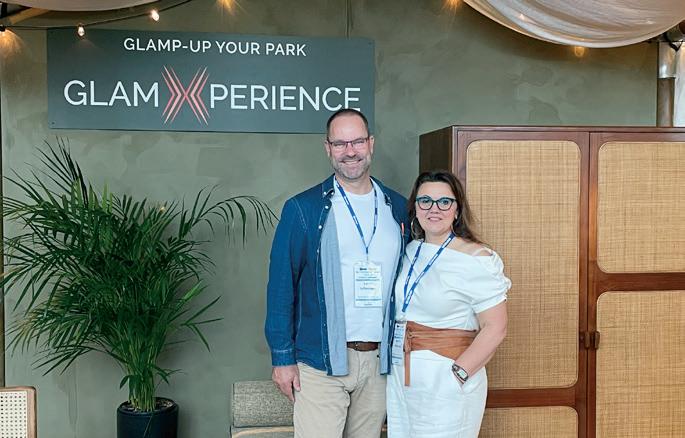

Motorhomes with Silver and Royal Flair with Bronze.
And CIAA Chairperson Donna Cocking handed out four Chairperson’s Awards, recognising David Pratt, Brendan Heenan, Lyndel Gray, and Tony Briant for their vital roles behind the scenes.
Of particular pride for the association and its delegates was the generosity on show. More than $50,000 was
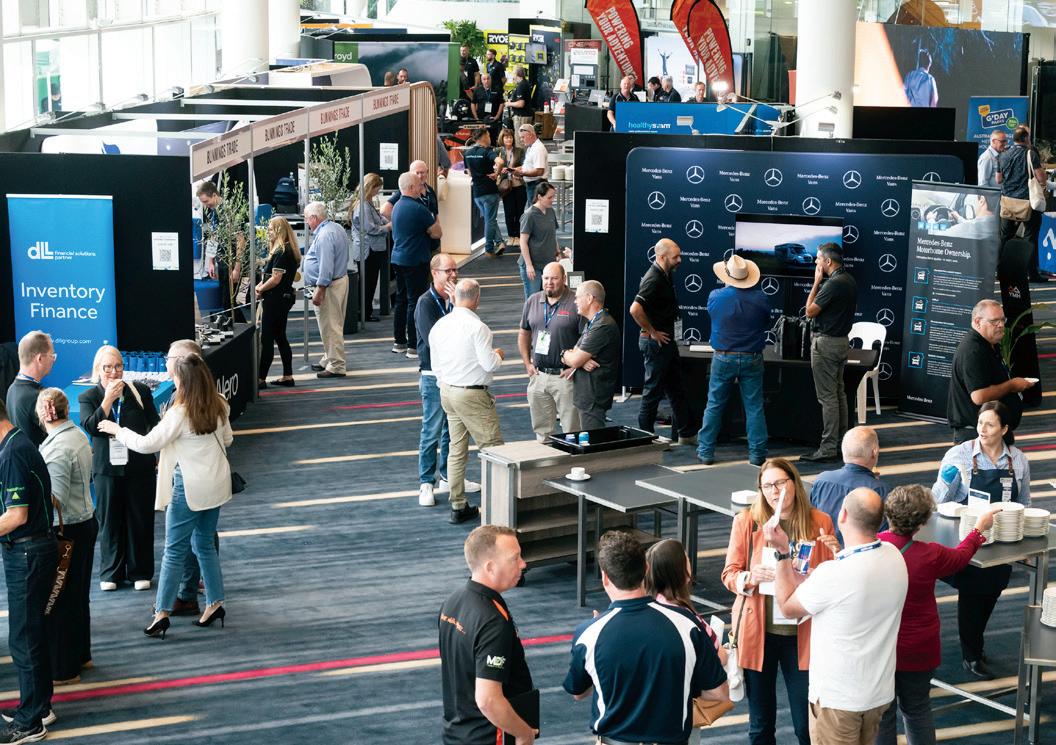
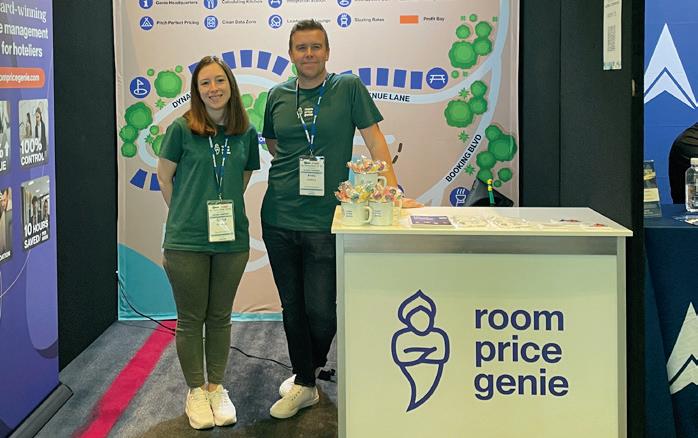
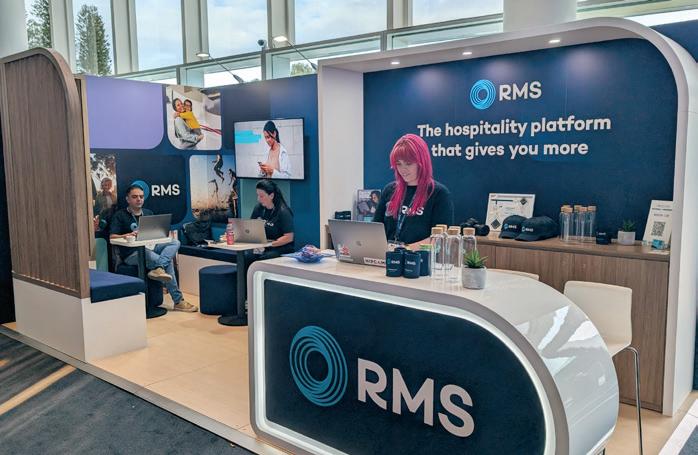
raised for Pankind to support research and awareness for pancreatic cancer, a cause that has touched many within the industry.
“We try to make every moment count,” Stuart Lamont said “From knowledge sharing and networking to celebrating our achievements, our single greatest measure of success is that people leave with fresh ideas and renewed
With record attendance, a dynamic program and that unmistakable sense of community spirit, this year’s conference was a powerful reminder that the caravan and camping sector is more than just an industry—it is a thriving, connected community, ready to grow and succeed together.
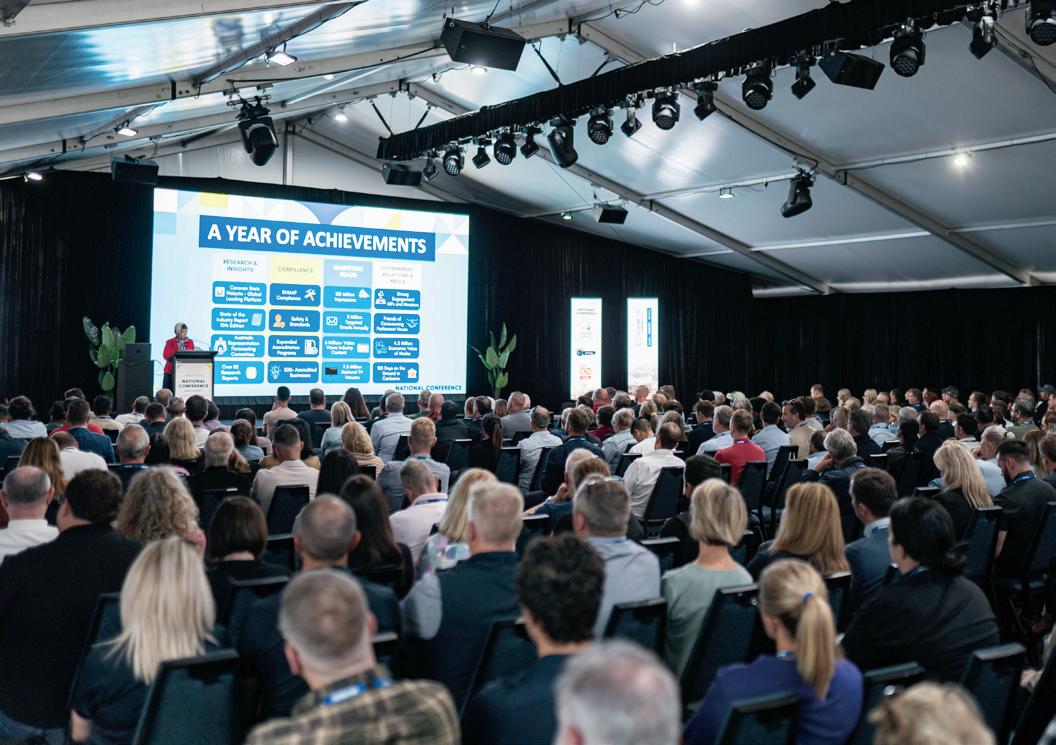
Horizon
optimism. Judging by the feedback this year, that’s exactly what happened.”
Images: License Caravan Industry Association of Australia
Images: Mandy Clarke
Standing out in a sea of sameness
By Dennis Tocknell
It is 2025; You are looking for a light transportation vehicle for your facility; Your research so far has caused more confusion than anything else –Why do all these carts look the same and have the same features, but have different names and badges?
Well you guessed correctly – they all come from the same place!
Despite the plethora of “different” vehicles available all the brands, especially the economically priced brands, are pretty much the same in terms of product offering – the key however in today’s market to a successful procurement of a light transport vehicle is not what vehicle you buy but knowing who you are buying it buy from!
The increase in available options has seen many new players enter the market, some of whom have already exited the market, and left their customers without the necessary after sales and warranty support.
Augusta Golf Cars on the other hand are here to stay.

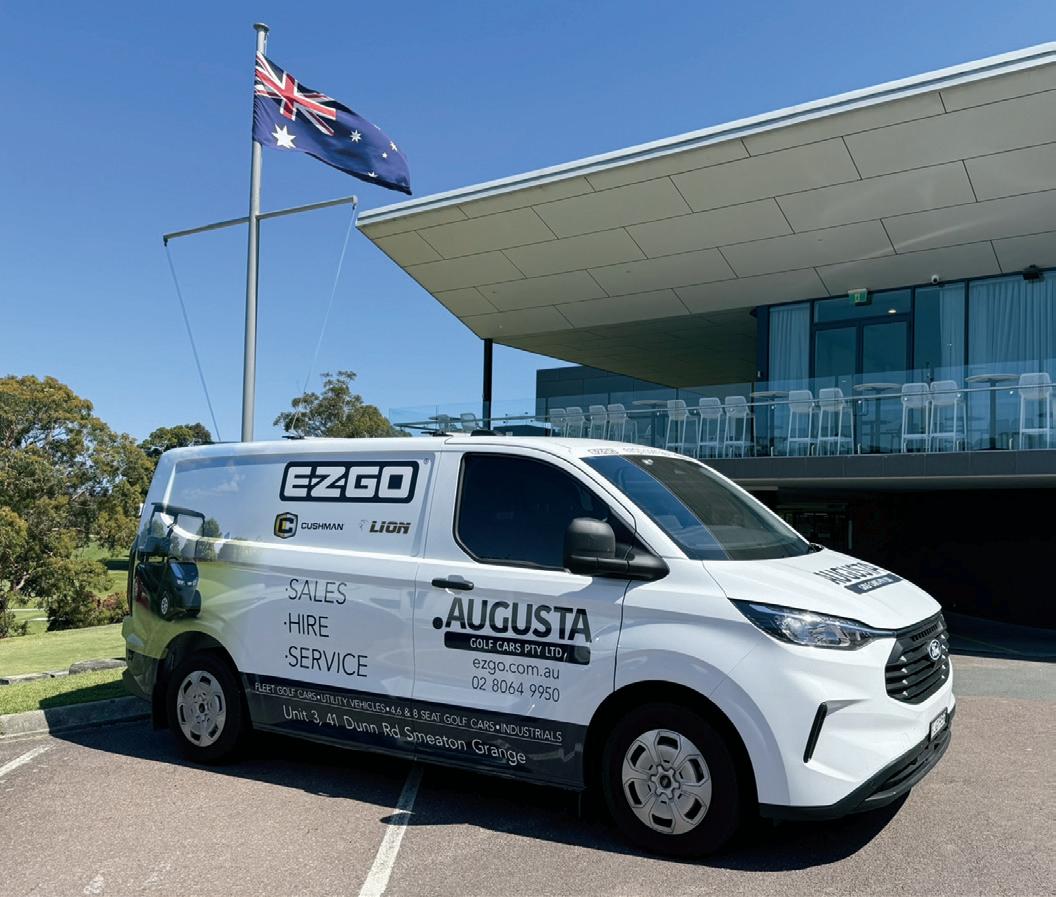
Augusta Golf Cars has a significant commercial portfolio and sells light transportation vehicles to retirement villages, airports, factories, holiday parks, and hotels etc.
With an enormous range of vehicles including E-Z-GO, Cushman, Lion and Atlas as well as parts and accessories from Pace Technology, Nivel and Roy Pow, it is easy to see how Augusta Golf Cars are the leaders in the market.
Mr Georgiou said “Because we have representation across the country, we are probably the only golf car company in Australia that truly offers a one-stop shop service where we can engage corporate, government departments and businesses and service them from one point of contact.
“Our staff are well equipped and have years of experience in the industry.”
“There isn’t a requirement we can’t satisfy. We have a large range of products and the ability to customise and modify as required.” Mr Georgiou added.
Mr Georgiou went on to explain that Augusta Golf Car’s appointment as a Lion Stockist is very exciting and that with the addition of this range of golf cars, Augusta Golf Cars are well and truly positioned to support their wide-spread and diverse customer base throughout Australia.
The Lion range of vehicles include golf cars, people movers, cargo vehicles, utility vehicles, linen vehicles, medical vehicles, wheelchair accessible vehicles and even 8,11 or 14 seater buses perfect for tours and sight-seeing.
The bulk of the Lion range sold by Augusta Golf Cars are fitted with Advanced 150Ah lithium-ion battery packs (that are certified to international standards), three-point seat belts, automatic electronic park brakes as well as 4-wheel hydraulic disk brakes.



Raymond Georgiou, CEO of Augusta Golf Cars said that this part of the business has grown substantially over the years.


“We can service customers nationally because of our extensive and strategically placed branches and dealer network. This network has proven critical over the years with our ability to efficiently service large corporations to small businesses and everything in between.



Augusta Golf Cars, who have served as the exclusive master distributor for E-Z-GO and Cushman for the past 20 years, have recently entered into a commercial arrangement with the importers of the LION branded range of golf cars.
commercial arrangement with branded range of golf cars.
It is a good fit!










sell, service and support all





Lion offer a wide variety of well-built vehicles suitable for a myriad of different tasks; Augusta Golf Cars have the network, resource, infrastructure and experience to competently sell, service and support all the vehicles included in the range of products nationwide throughout Australia.














solar solutions available for




The innovation does not stop with the vehicle itself, the technical team at Augusta Golf Cars have years of experience working with lithium, having ushered the technology into the market in Australia with the E-Z-GO Elite range of vehicles. AGC’s technical team have recently developed solar solutions available for energy conscious clients, among some of the other great technological advancements.









If you find yourself scouring the internet for information as to which vehicles to buy and where to buy them from, we recommend you look no further than Augusta Golf Cars.








Graham Janson, the National Sales manager for Augusta Golf Cars’ commercial division is ready to take your call and assist you.


Images courtesy of Augusta Golf Cars

PEOPLE MOVERS


150
4
3
LED
LED Speedometer and Voltage Meter
Metallic Bodywork
Dual USB Port
Mirrors







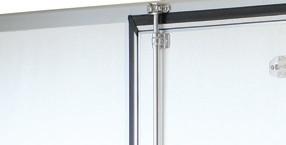












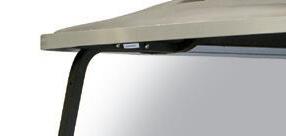

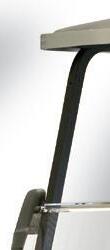
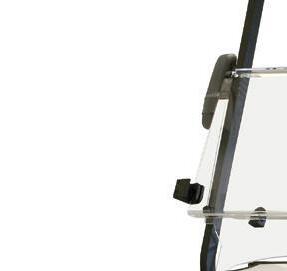
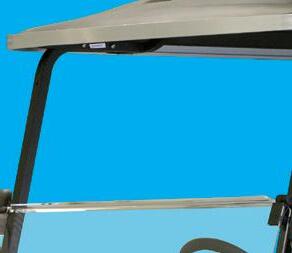

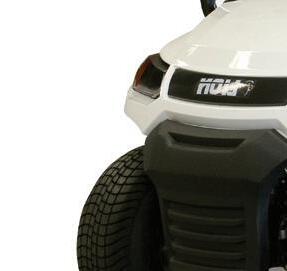

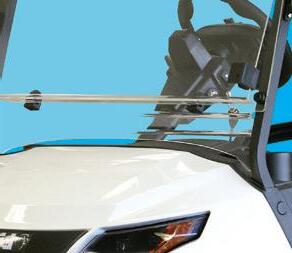
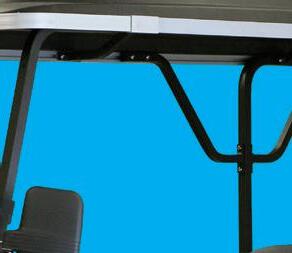
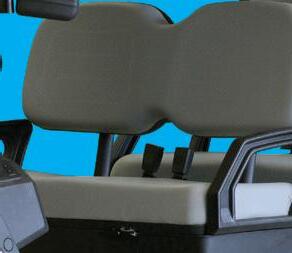
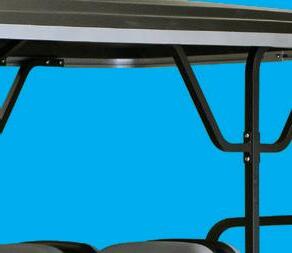
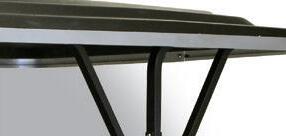
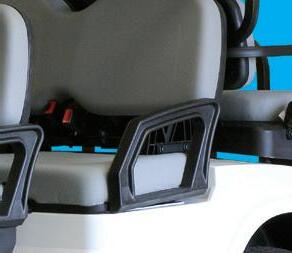



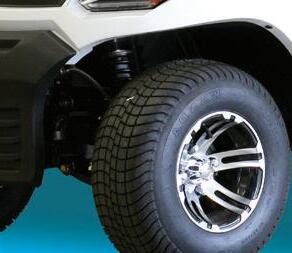

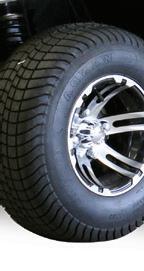
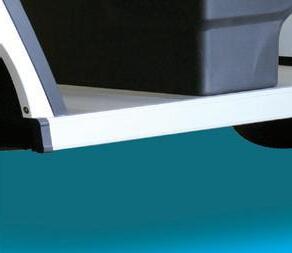




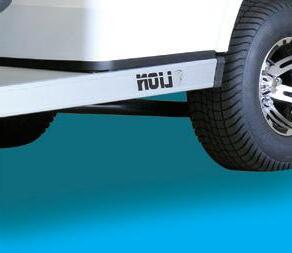
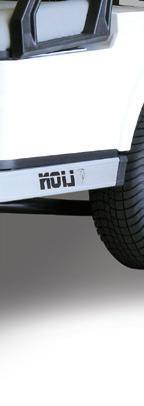






LINEN VEHICLES


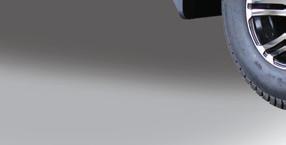

150
4

Alloy
3
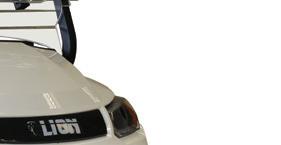

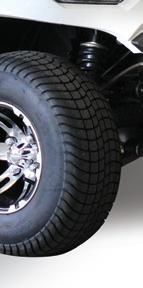
UTILITY VEHICLES
150


LED
LED
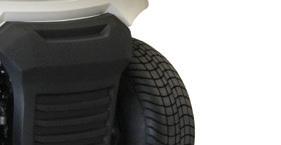



Metallic Bodywork
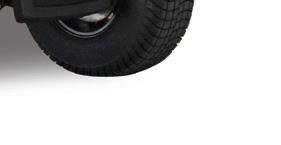
Dual

Mirrors

3
LED
LED
Metallic
Dual
Mirrors


















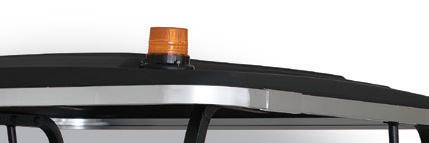



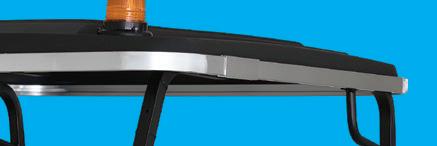
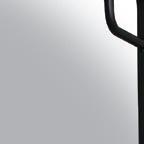
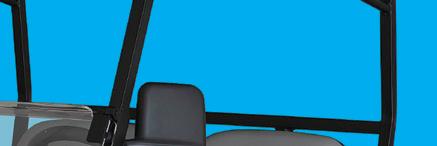








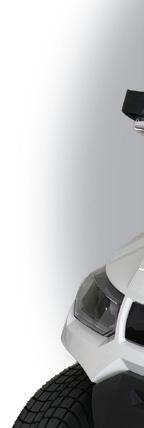
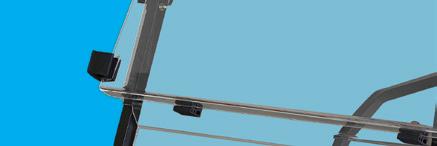
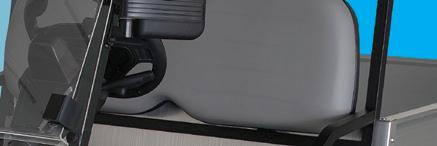
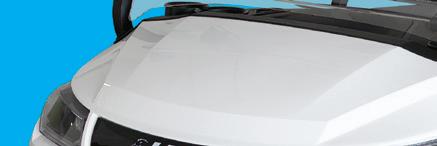
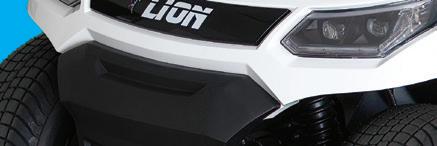

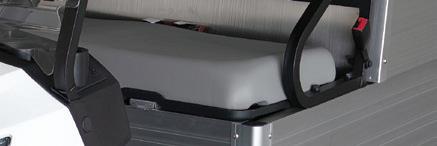

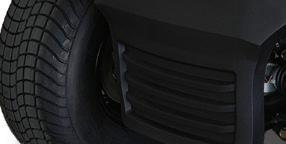


























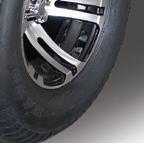
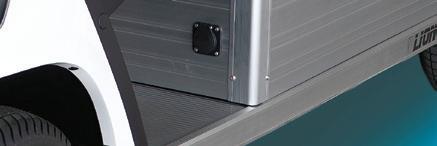



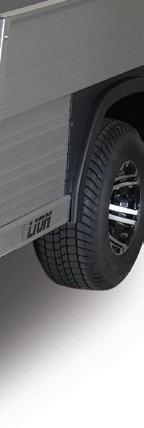






Boosting demand and direct bookings: A revenue roadmap for caravan parks
Eff ective demand generation is central to a caravan park’s ongoing success. A revenue management system (RMS) allows caravan parks to automate key revenue management tasks and enhance pricing by room type, ultimately helping attract the right guest at the right price.
In the past, manual based revenue management approaches have looked at a caravan park’s booking history and current activity levels to forecast demand. During periods of high demand, property owners would increase rates. When demand is low, they would discount them, trying to artifi cially generate demand when needed.


Today, demand generation is rarely this simple. With the rise of online travel agents (OTAs) and flash sales, it’s no longer feasible to manually track bookings, recognise shi s in demand, and react quickly enough to maximise profi t. In a complex, high-speed environment, manually collecting, evaluating, and calculating data is slow and vulnerable to errors—and that’s not even ge ing into the challenges of manual distribution of pricing and inventory information.
This is where an RMS can make a huge di erence. An RMS automatically assesses caravan park performance, allowing owners and managers to quickly compare room sales and revenue against marketwide and total accommodation data, all of which are vital for growing revenue and profi tability.




appreciate extended midweek o ers or quieter communal areas, while families could be drawn to free children’s activities or bundled excursions that allow everyone to explore the local area. In essence, each personalised communication or o er makes guests feel recognised and valued, increasing the likelihood of a return stay.
Caravan Park promotions should be developed with clear audience segments in mind, factoring in lead time, preferred booking channels, and geographic origin. The factors influencing a school holidaying family di er markedly from those motivating a retired couple in search of a peaceful retreat.

Caravan parks have a wealth of guest data from booking histories, loyalty club details, and onsite transaction records for amenities like kiosks or equipment rentals. By utilising this data to inform guest segmentation, an advanced RMS can detect pa erns and trends about the types of guests who visit and what they value most. Segmented guest data based on demographics or spending behaviour also enables highly targeted promotions tailored to their preferences. Retirees may
codes and personalised upsell o ers presented at the time of booking are all strategies that help maximise direct booking conversion and foster a stronger relationship with guests over the long term.
Caravan parks also need to focus on building loyalty and return business.

activities aimed at driving bookings through direct channels.
A racting more visitors to a park’s own website and converting “lookers” into “bookers” helps minimise fees paid to third parties. By analysing search pa erns, travel dates, and guest preferences, operators can develop targeted campaigns that appeal to those most likely to complete a direct booking. O ering exclusive directbooking incentives can encourage guests to bypass OTAs. Promotional
A happy guest who leaves a glowing online review is already primed to come back, provided they feel that the park continues to value their patronage. By implementing a loyalty framework and regular communication to past guests that o ers early check-ins, late check-outs, or exclusive discounts on local experiences, caravan parks can build meaningful connections that a ract return business.
As consumer booking behaviour continues to evolve, caravan parks must do the same. The days of relying solely on gut instinct or seasonal price cuts are gone. By investing in modern revenue management tools and prioritising direct, personalised guest engagement, caravan parks can take control of their demand strategy and drive profi tability and guest satisfaction.
It’s also important to recognise that securing a booking isn’t always about price, it’s o en about perceived value. Rather than cu ing nightly rates to a ract guests, caravan parks can add value in other ways. Free bike hire, late check-outs, firewood bundles, or discounted local experiences can all enhance appeal without a ecting revenue.
Acquiring new guests through extensive marketing or high commission fees to third-party OTA sites can be expensive, which is why Caravan Parks need specifi c strategies and dedicated demand generation

For more information on how your caravan park and drive demand with revenue management technology, please visit: www.ideas.com




















































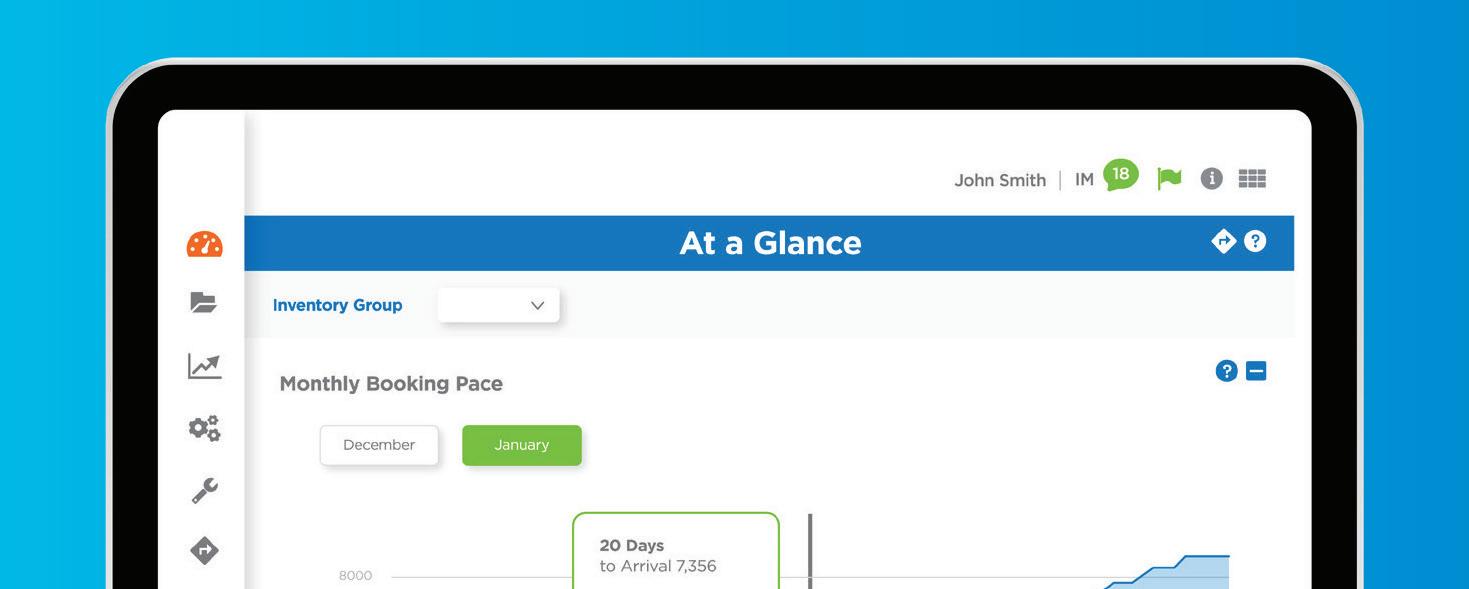










































































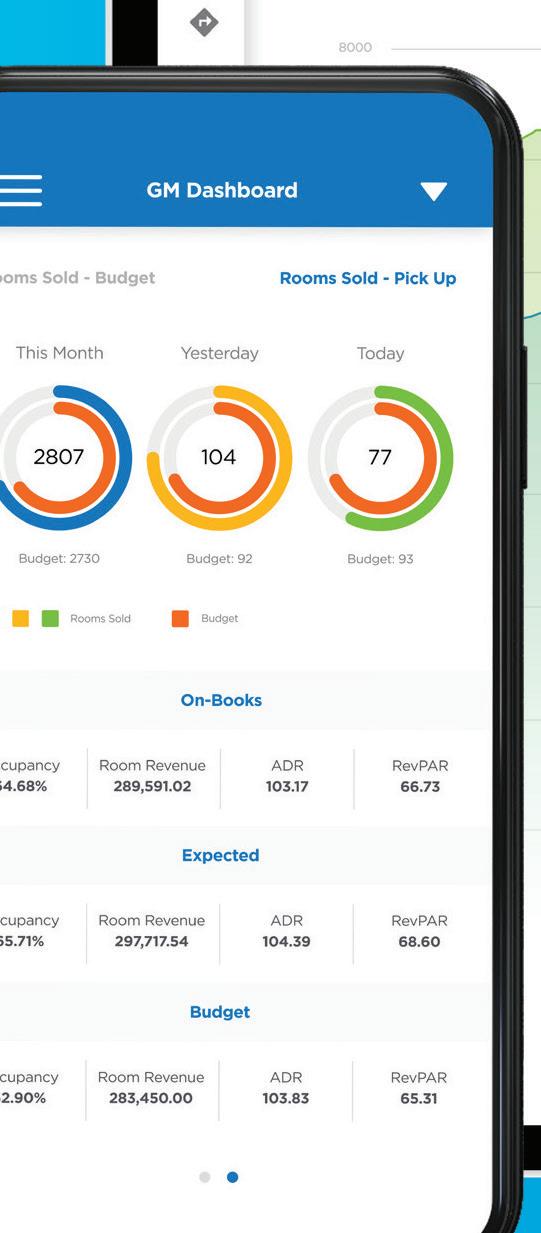



















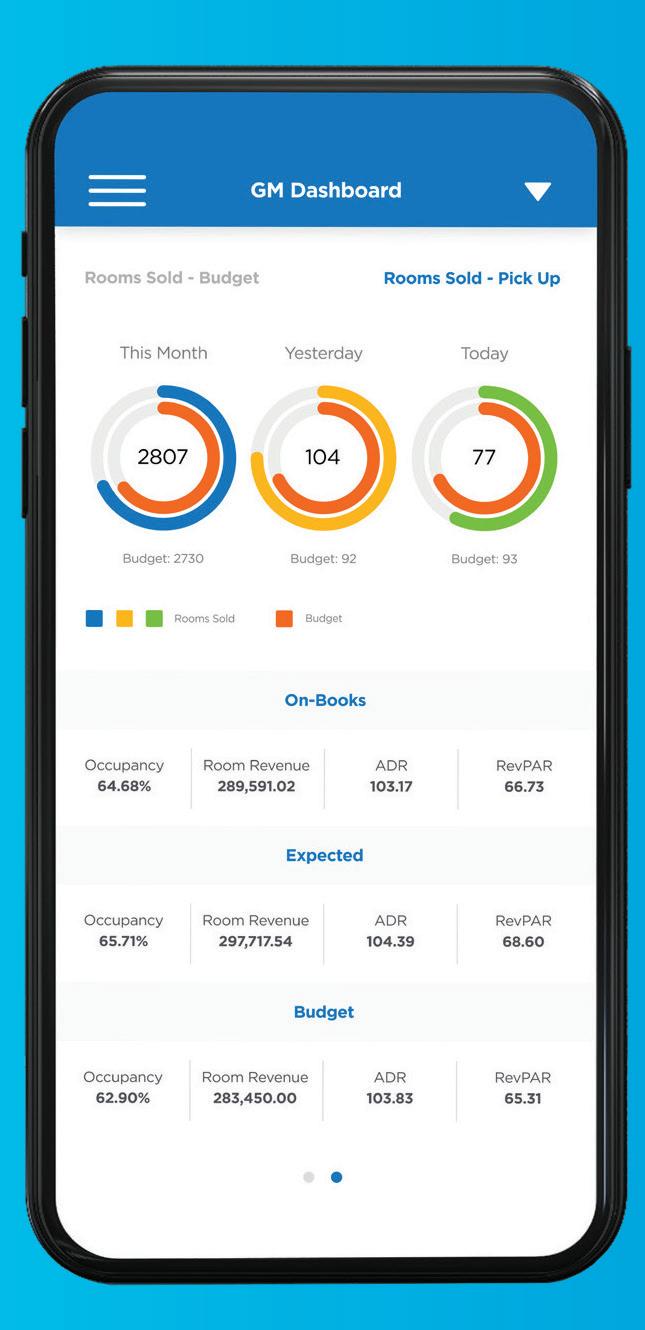

























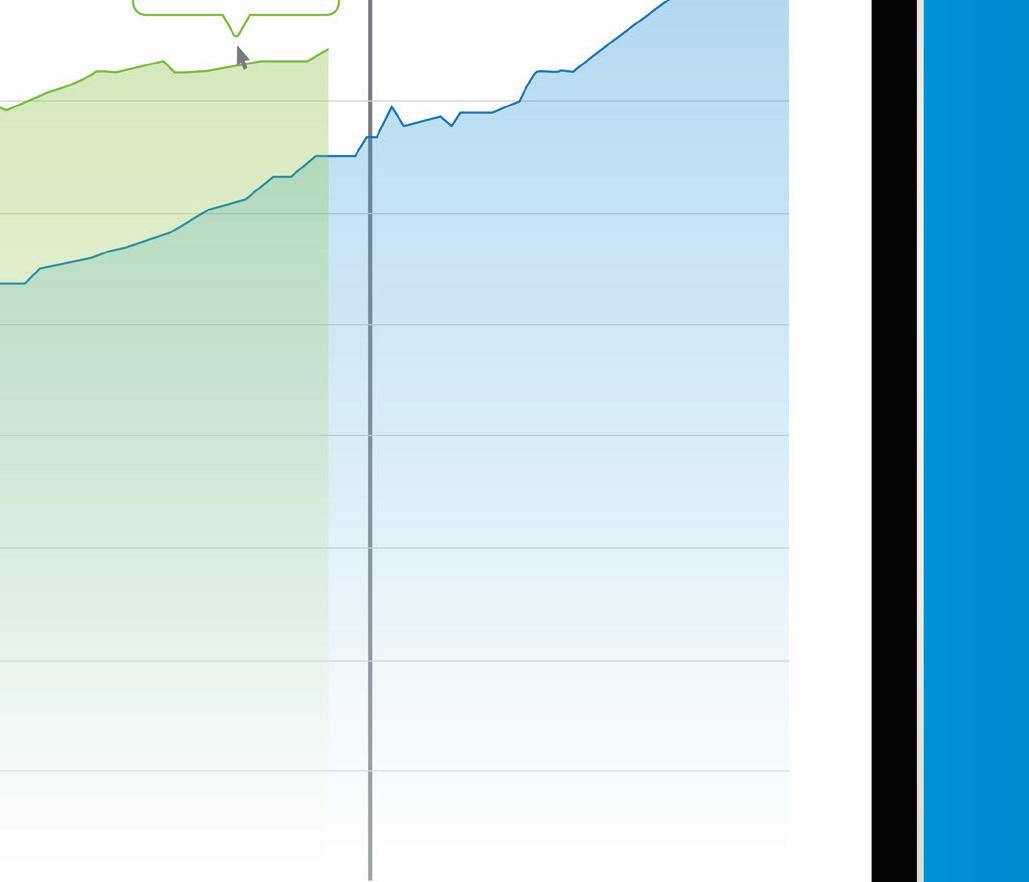























Rinse, Refill, Repeat:
The rise of smart water stations in holiday parks
Today’s travellers aren’t just seeking a place to plug in or pitch a tent; they’re searching for destinations that reflect their values. Sustainability. Family and pet-friendly freedom. Caravan and holiday parks that embrace these values are turning to a surprisingly powerful upgrade: Drinking water stations.
Why? Because amenities aren’t just about function, they’re about feeling good. And nothing says ‘we care’ like providing clean, easy-toaccess hydration for every guest, two-legged or four.
Hydration without hassle: The new guest essential
Whether guests are heading out for a hike, returning from the beach, or simply lounging by the pool, fresh water shouldn’t be an afterthought. It should be a given.
Drinking water stations make that possible. With dual bott le refill points, optional fountains, filters, showers, service taps and even a swinging dog bowl, they turn a basic utility into a 5-star feature. Guests refill, rinse off, let the dog take a drink and head off refreshed. No bott led water. No queues to the kiosk. No plastic waste.
Simple. Smart. Sustainable. Say goodbye to single-use plastic
Eco-conscious guests are actively looking for destinations that walk the sustainability talk. Parks that continue to sell plastic water bott les, or
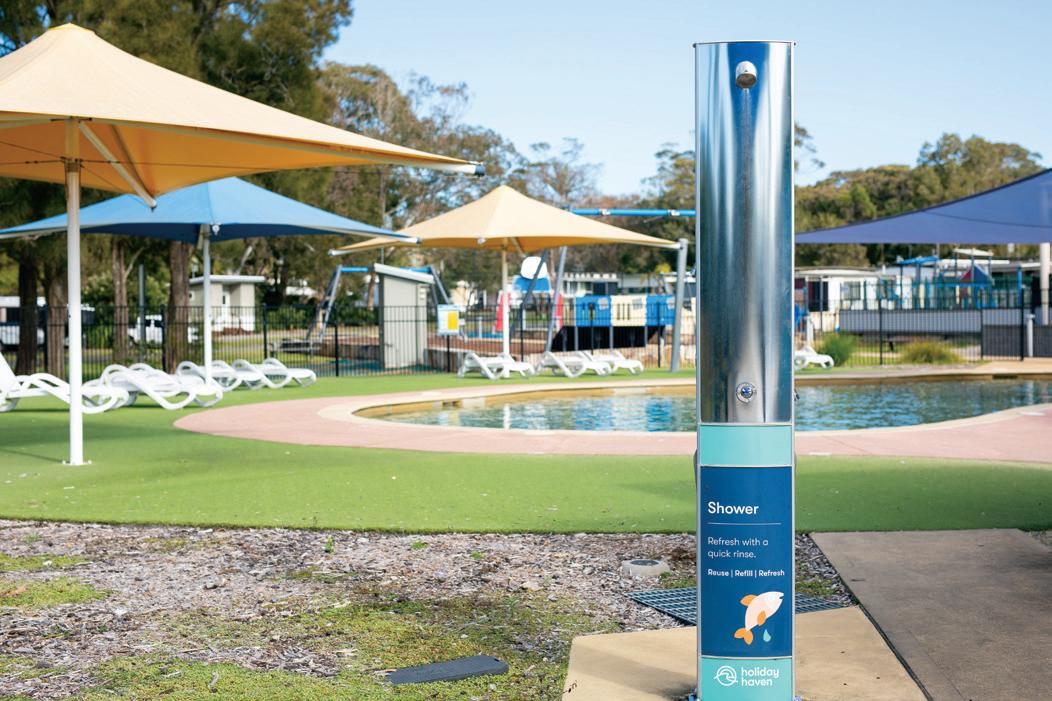
worse, off er no refill options at all, risk being left behind.
By installing refill stations, you’re not just reducing waste. You’re reducing costs, cutt ing clutter, and aligning your park with the kind of travel that’s becoming the norm: wastefree, mindful, and modern.
And it doesn’t stop at bott les. With custom artwork panels, these stations can proudly showcase your park’s personality. Whether that’s a wildlife theme, local artist’s design, or your commitment to staying green.
More than a tap: It’s an experience
What makes a great holiday park stay? The litt le things that feel big.
A shower to rinse off before and after a swim at the pool or beach. A place to refill your water without trekking back to the van. A bowl of fresh water for the dog on a hot day. These aren’t extras, they’re expectations. Water stations meet them all in one sleek, low-maintenance package and work hard behind the scenes. Guests who rinse before the pool bring less dirt and
sunscreen, meaning your pool stays cleaner, longer, with fewer chemicals. It’s wellness for your water, and your bottom line.
Pet-friendly. family approved. Planet loving.
Today’s parks are more than places to stay, they’re spaces to live, connect, and explore. Travellers bringing their kids, dogs, grandparents, and looking for amenities that welcome everyone.
That’s why Civiq water stations are gaining attention. They’re inclusive by design. Easy to use. Easy to love. And easy to install wherever your guests gather. Near the pools, BBQs, walking tracks, reception, or beach access points.
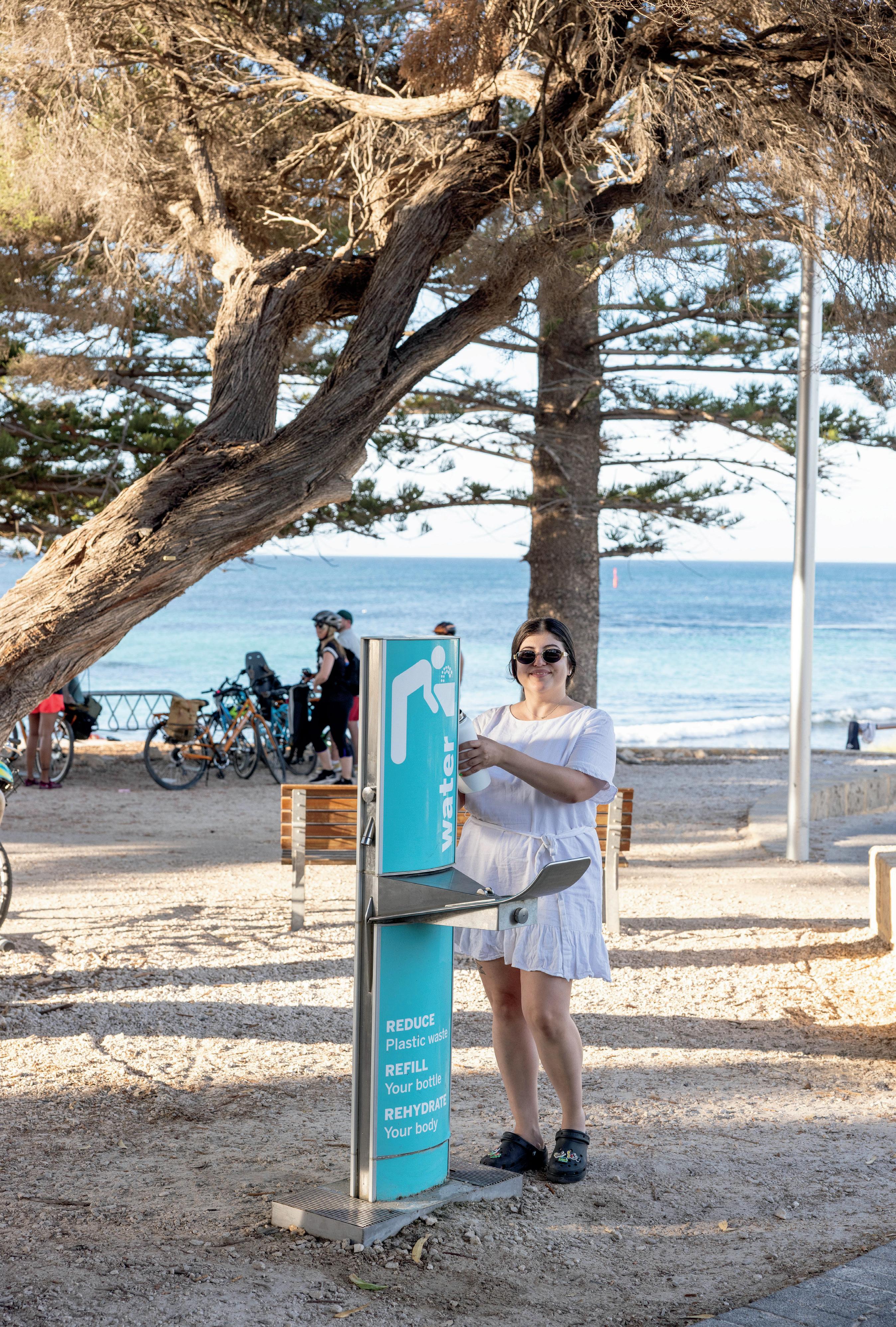
Even better? They’re Australian made, built tough, built for Aussie weather, and low on maintenance.
Small change. Big impact.
At the edge of the NSW coast, where the waves meet white sands and eucalyptus scents the air, lies Culburra Beach Holiday Haven. A favourite escape for families, adventurers, and anyone craving a laid-
Sustainability sells. Today’s travellers actively seek out ecofriendly stays, and a park’s green initiatives can be the deciding factor in a booking decision. Installing water refill stations helps position your holiday park as an industry leader, joining the ranks of brands that prioritise sustainability without compromising on guest experience.
More than that, refill stations can directly impact your bottom line. Caravan and holiday parks that make sustainability a priority report increased guest satisfaction, repeat bookings, and positive reviews. Going green isn’t just good for the planet, it’s great for business.
Image courtesy of Civiq

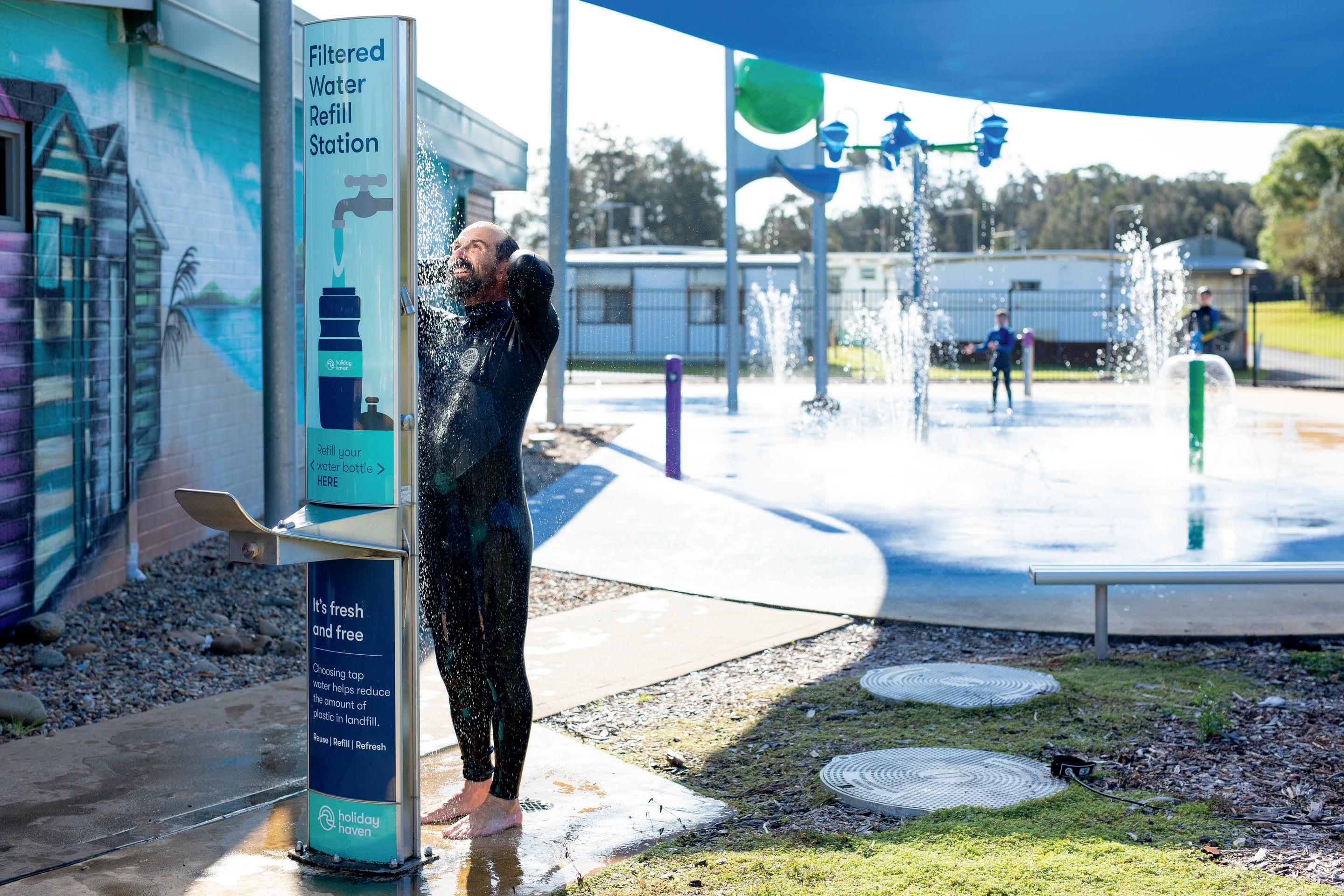
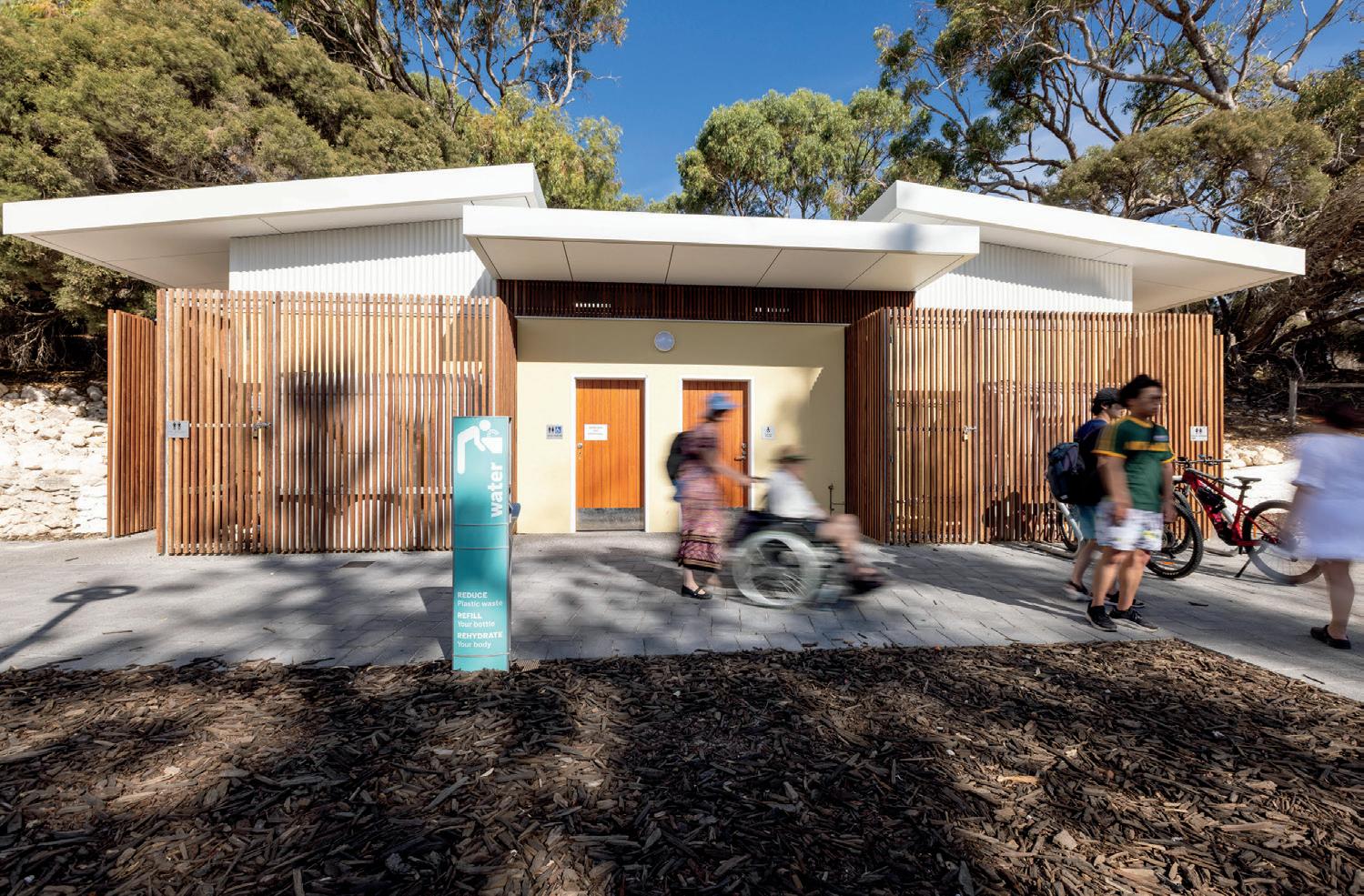



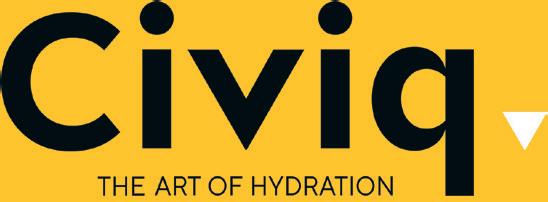
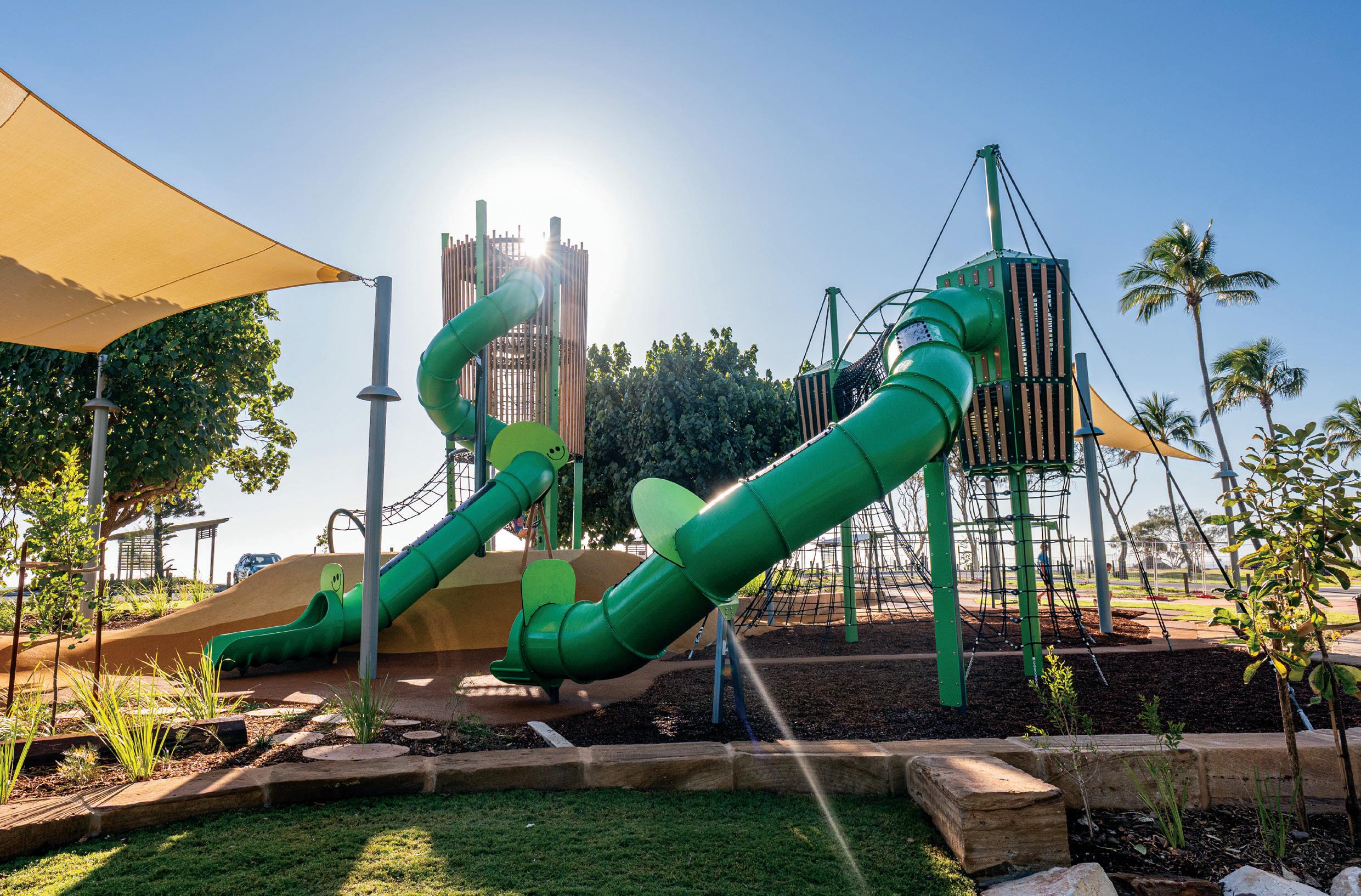
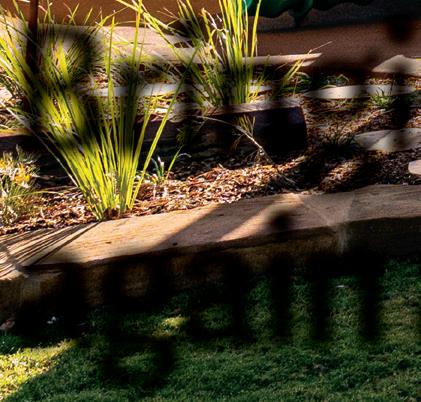
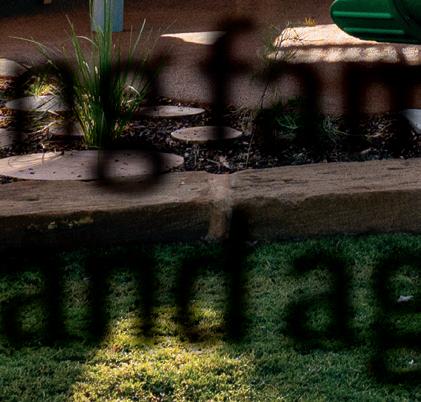
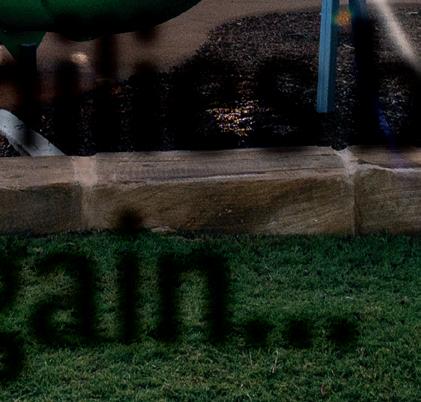
Bringing families back again and again…
By Sarah Davison, Industry Reporter
Australia’s holiday park sector is booming, with national summer revenue lifting 3.7 per cent to just under $900 million, according to the latest figures from Caravan Industry Association of Australia.
While rising costs and inflation have contributed to this increase, growing demand—particularly
from families—has driven investment in family-friendly facilities across the sector.
Families are continuing to turn to holiday parks as a value-for-money alternative to hotels, especially as household budgets tighten amid the ongoing cost-of-living crisis. In today’s competitive market, features like welldesigned, memorable play areas can be the deciding factor between a one-time visitor and a returning guest.
But modern playgrounds are more than just a slide and a
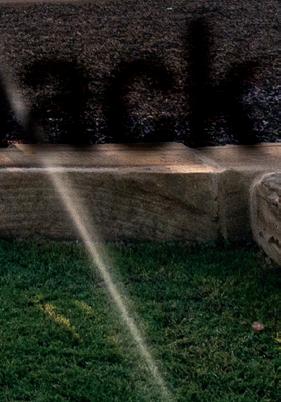
swing. From inclusive design and accessibility to safety, sensory appeal and visual impact, the most successful play areas are strategic investments. They reflect a genuine understanding of guest needs—and a commitment to creating spaces where kids, teens, parents and grandparents can all play, relax and connect.
To find out how parks can create family-friendly play areas that truly stand out, AccomNews spoke with Australian Waterslides and Willplay
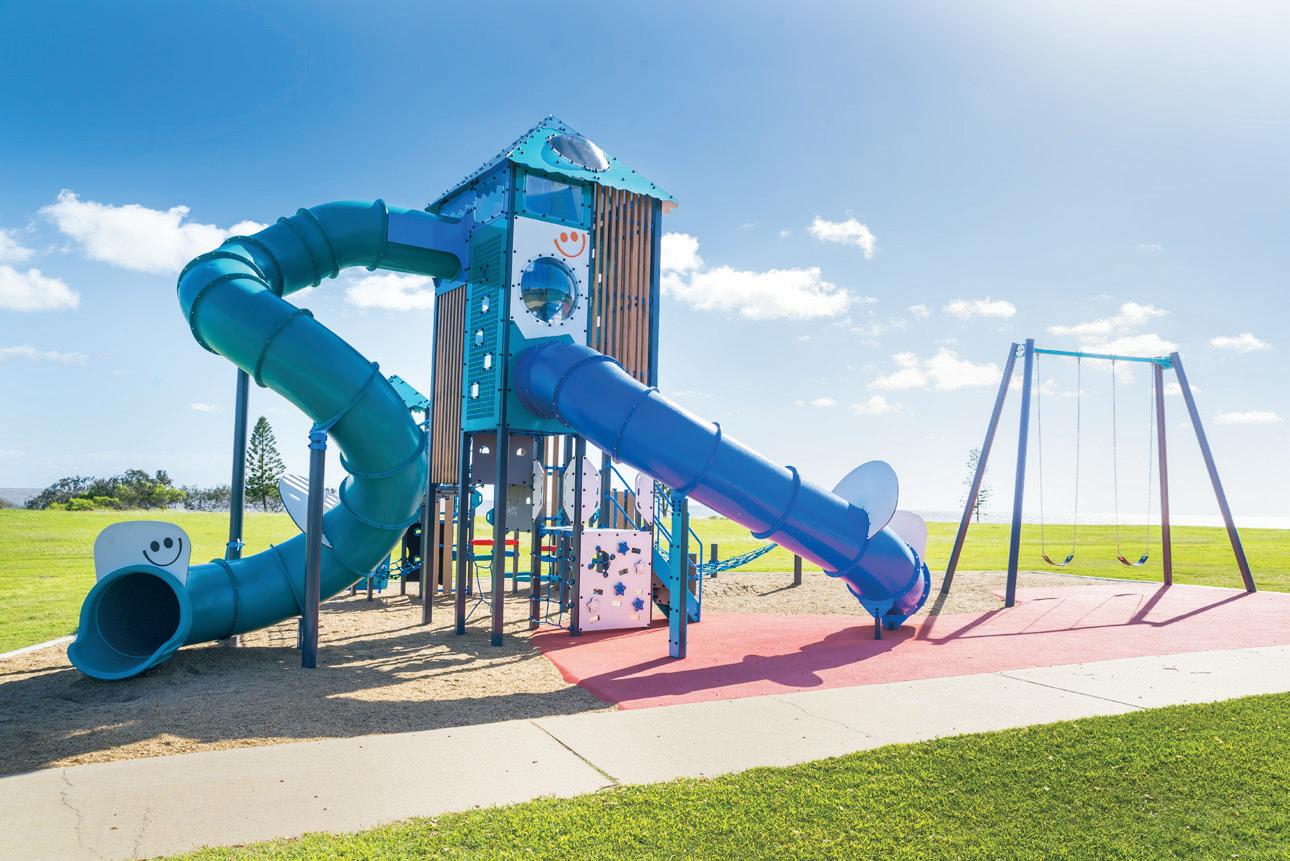
What considerations should caravan park operators take into account to ensure their waterslides and aquatic play equipment meet the entertainment needs of guests across all age groups?
Annette Matthews, Managing Director, Australian Waterslides and Leisure: For families with children, aquatic attractions are a major drawcard. In many cases, the presence of waterslides or splash parks is the deciding factor when choosing one park over another. It’s no longer just a ‘nice extra’—it’s a must-have for attracting today’s family travellers.

Coastal Design.

Image courtesy of Willplay
To appeal to all ages, variety and inclusivity are key. Waterslides designed for thrills are ideal for older kids and teens, while splash zones with tipping buckets, mushrooms and gentle water features are perfect for younger children.
A well-designed layout with good visibility, shaded seating for supervising adults and intuitive zoning can make a huge diff erence.
What emerging trends are you seeing in waterslide and splash park design?
Annette: Waterslides and water play areas never really go out of style, but we are seeing a shift toward more tailored, space-savvy designs. Parks are looking for custom-built solutions that work with their available footprint while still delivering maximum fun.
Slides remain popular with teens, while themed, interactive splash zones keep younger kids entertained for hours.
And while fun is always the focus, safety never goes out of
style. All equipment must meet Australian standards—so it’s vital to work with experienced suppliers who understand these technical requirements.
How can your waterslide designs be customised to suit the specific needs, space and aesthetics of each individual caravan park?
Annette: Waterslides and play features can be fully customised to meet each park’s specific needs—whether that’s space limitations, branding, guest demographics or design aesthetics. This allows operators to create something that feels integrated, purposeful and in tune with their overall vision for the park.
What about parks in colder climates or regions with distinct winter seasons?
Annette: For parks in cooler climates, we recommend designing a combination wet/ dry play zone. That way, even during colder months when the water features might be turned off, you still have a vibrant and appealing play area
Looking to make a splash with guests this season?
At Australian Waterslides and Leisure, we off er waterslides and water play that are safe, interactive and engaging for children to adults - there’s something for everyone!
Whether you want to enhance your existing facilities or create an entirely new water zone matched to your park’s aesthetics, we are here to bring your vision to life.
We provide an extensive range of services from Design Consultancy, Master Planning, Management Consultancy, Feasibility studies, Park Operations, Sta Training, Rides and A ractions Design, Ride & A ractions Components Manufacture & Delivery, Construction Supervision to Full Installation.
Waterplay has proven to enhance favoured facilities across Australia, encouraging active play,
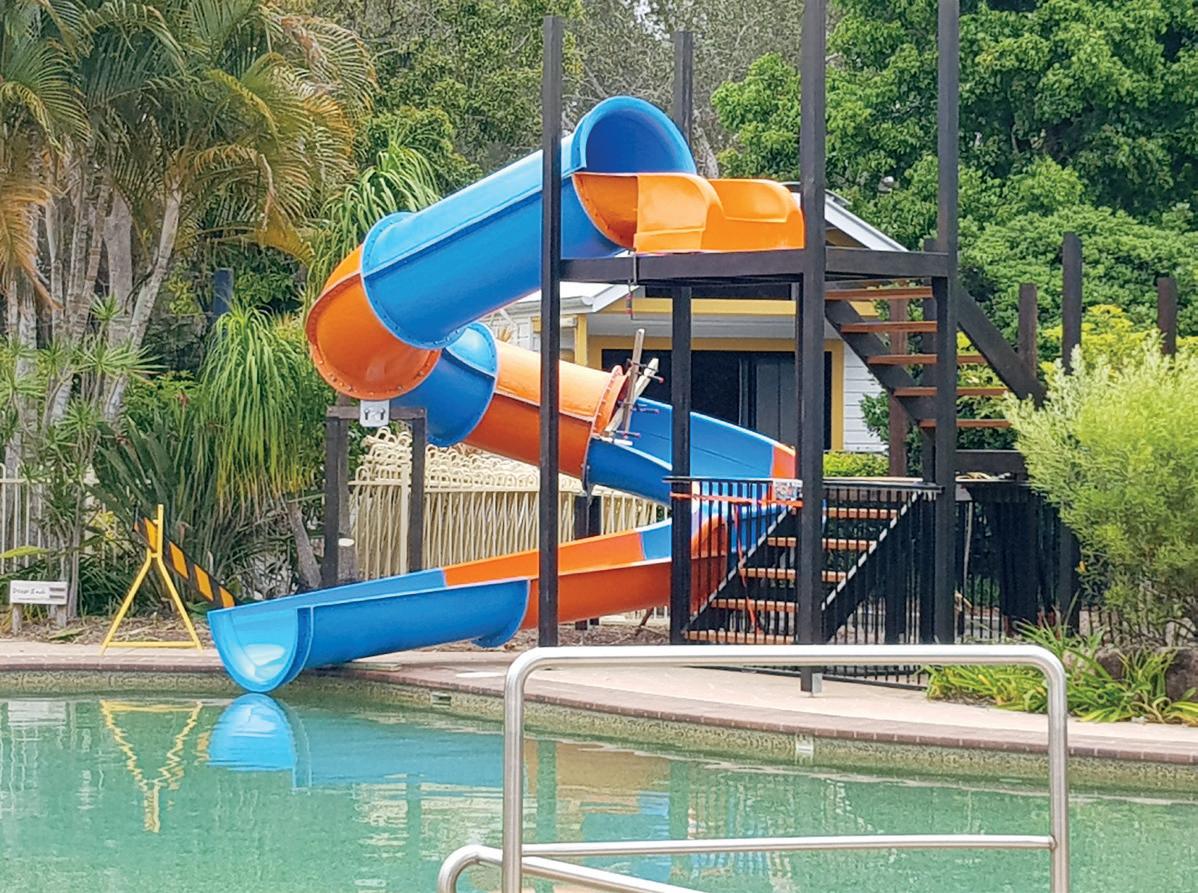
that adds value year-round.
That said, kids are often far more resilient than we expect. We’ve seen examples—like a park in Morwell—where children continue to use the splash zone even in winter!
Are there any other important considerations operators should keep in mind?
Annette: Absolutely. It’s critical to work with local companies that use Australian steel and labour. Not only does this
support our local economy, but it ensures the equipment is built to withstand the harsh Australian climate and meets our strict safety standards.
Caravan parks investing in aquatic play equipment should never compromise on quality or compliance. Choosing a reputable, experienced local supplier means the equipment you install is not only fun and functional, but safe, durable and designed to last.

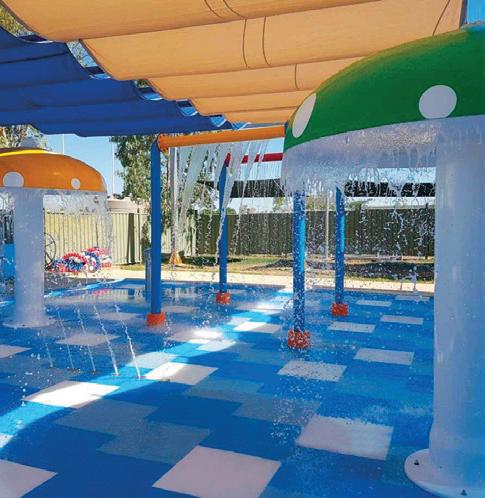
social interactions and sensory development for children, along with boosting visitation rates and returning customers.
Ready to transform your park into a family favourite?
Contact Australian Waterslides and Leisure now to discover how our waterplay and slide options can help make your park a top destination for generations. Email us at sales@waterslide.net or visit www.waterslide.net.
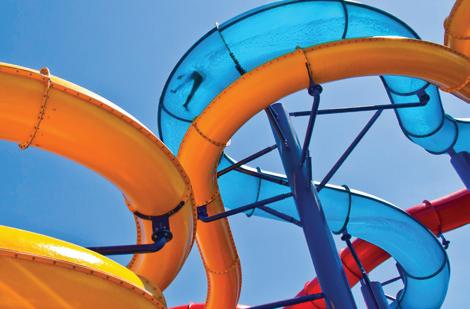
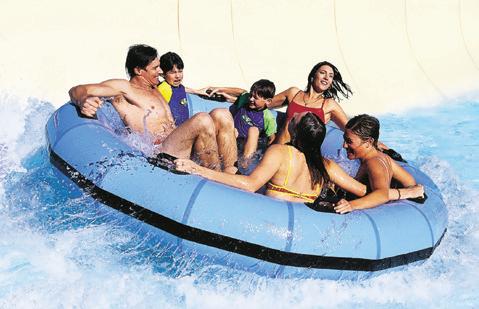
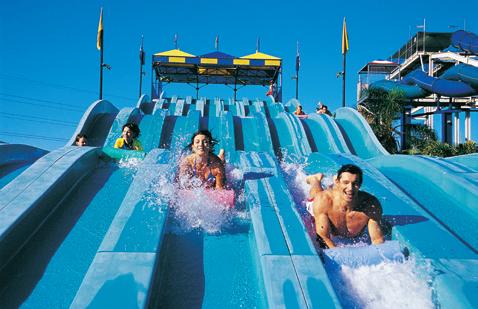
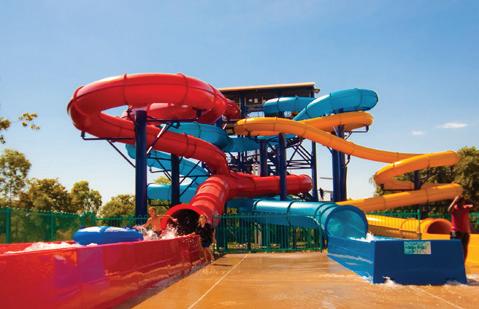
Image courtesy of Australian Waterslides and Leisure
Image courtesy of Australian Waterslides
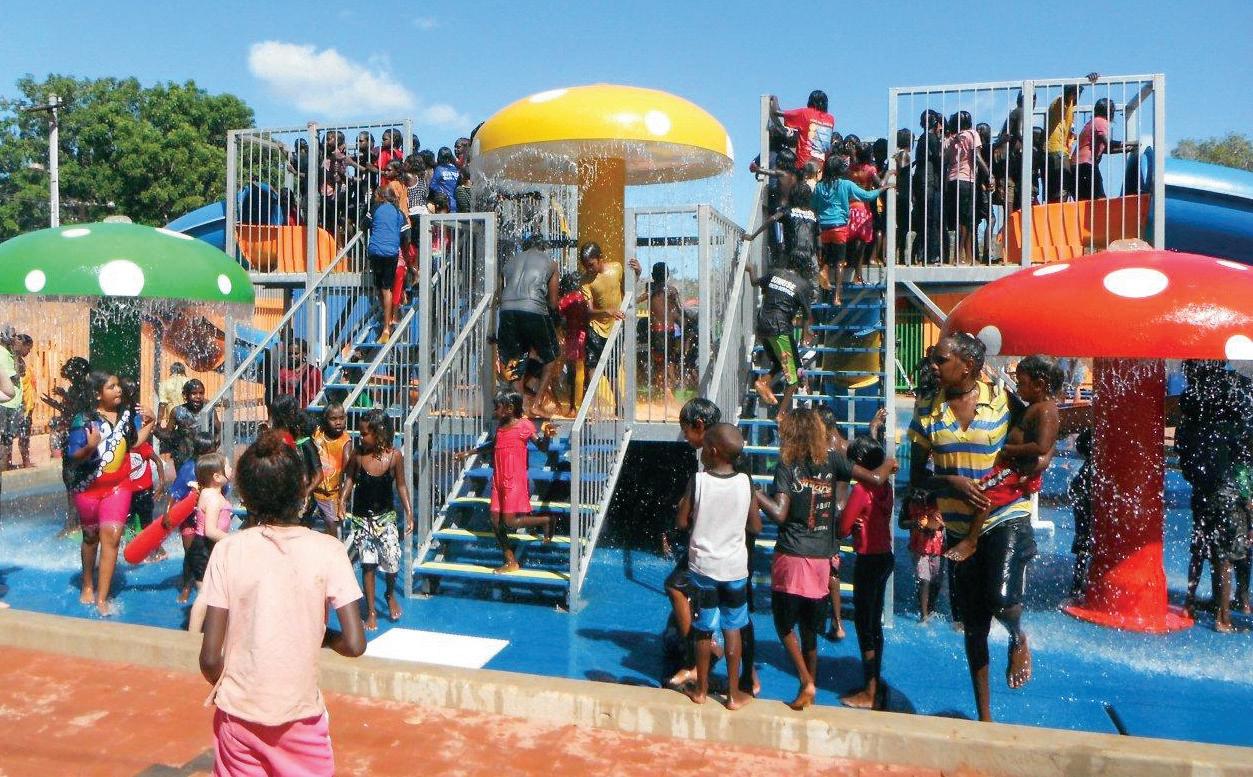
What trends are you currently seeing in playground design?
Nathan Lee, General Manager, Willplay: There’s a noticeable shift back to traditional playgrounds.
We’re also seeing more multi-generational design. Fitness elements are being incorporated into playgrounds so parents and carers can work out while the kids play— especially useful during school terms when the playground might otherwise be quiet.
Another growing trend is the push toward Australian-
made and recyclable materials. The result is more sustainable, locally sourced playgrounds that reflect the values of today’s families.
How can caravan and holiday parks create standout, memorable spaces for families?
Nathan: It begins with understanding your target demographic. For some parks, the playground is a central drawcard—something guests choose the park for. For others, it’s a value-add that enhances the experience without being the main attraction. That’s why it’s important to identify
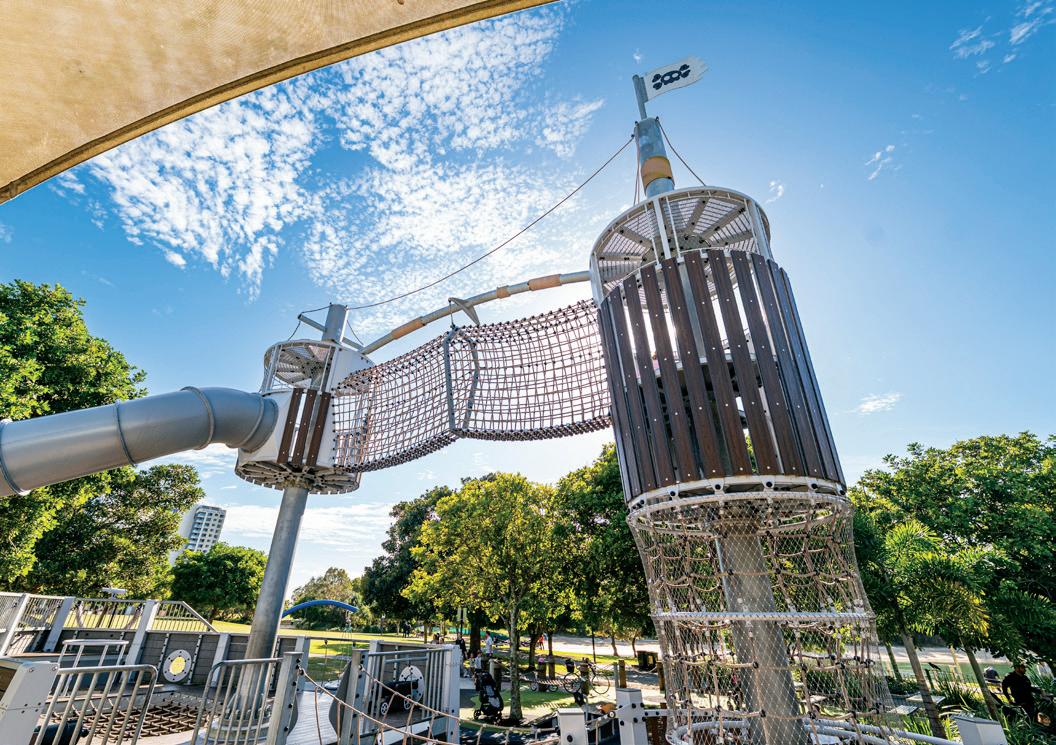
the guests you’re catering to and design accordingly.
Playgrounds are often the heart of a holiday park, so they need to be both visually appealing and highly functional. Design with multi-age use in mind: low, safe elements for younger children, and more adventurous challenges for older kids.
Also consider the visual impact from the street or main entrance. A well-designed playground can create an immediate wow factor, drawing in passing traffic and sparking curiosity among guests exploring the park.
The most memorable parks offer shared spaces where the whole family can engage—spaces that look great, feel safe and offer something for everyone. How is modern-day equipment evolving to meet the growing demand for inclusive and accessible play experiences?
Nathan: Accessibility is no longer just about having a specific piece of equipment. It’s about ensuring everyone can access and enjoy the space. That starts with clear, safe pathways, soft-fall surfacing and logical, inclusive layouts.
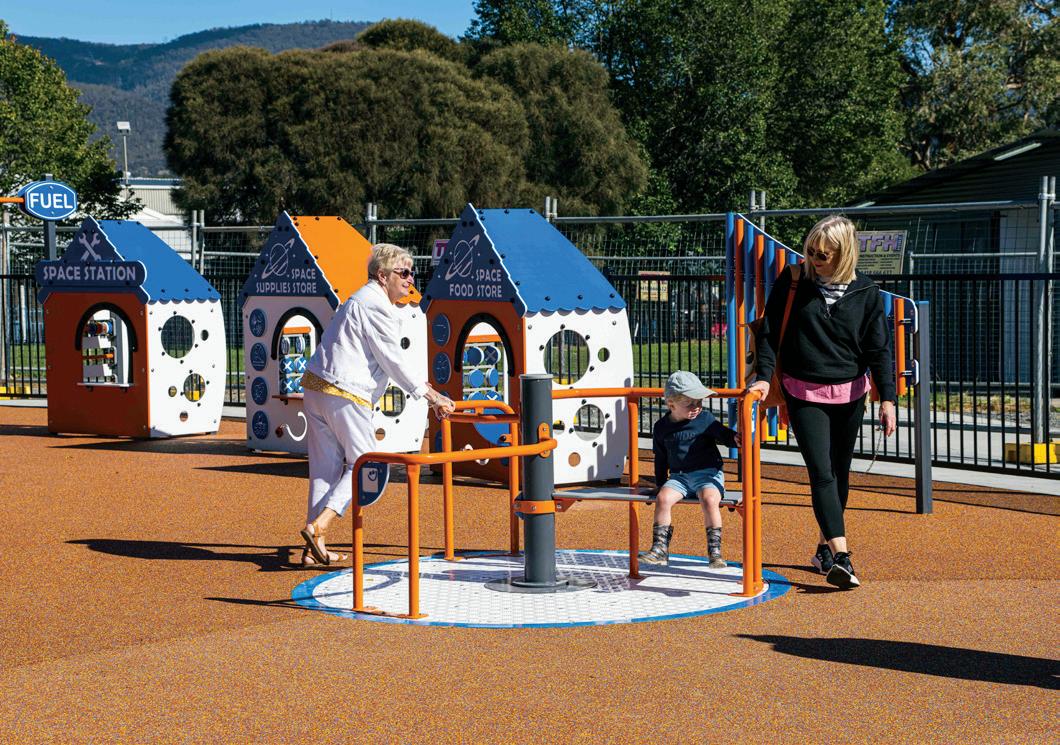
Image courtesy of Australian Waterslides
Image courtesy of Willplay
There’s a move toward groundlevel activities that encourage multi-generational play—so grandparents can interact without needing to lift or climb. It also supports children with mobility or sensory needs, ensuring they can join in without being sidelined.
Modern play spaces avoid segregating accessible equipment into separate areas. Instead, they’re fully integrated, so all children play side-byside, regardless of ability.
Operators need to define what accessibility means for their guests—whether it’s physical, developmental or sensory.
Colour choices, layout, signage and equipment types should all reflect those needs, and engaging with a play designer can guide this process.
For caravan park operators looking to upgrade their playground area, what are some key considerations?
Nathan: Start with your budget, but don’t let it be the only deciding factor. You want to create real value—not just tick a box. It’s about building a space that encourages repeat visits and happy memories.
Shade is another must. Assess whether natural shade can be incorporated, or if man-made solutions like sails are needed.
I’d also encourage operators to be cautious about trying to reuse old equipment. It might seem cost-effective,
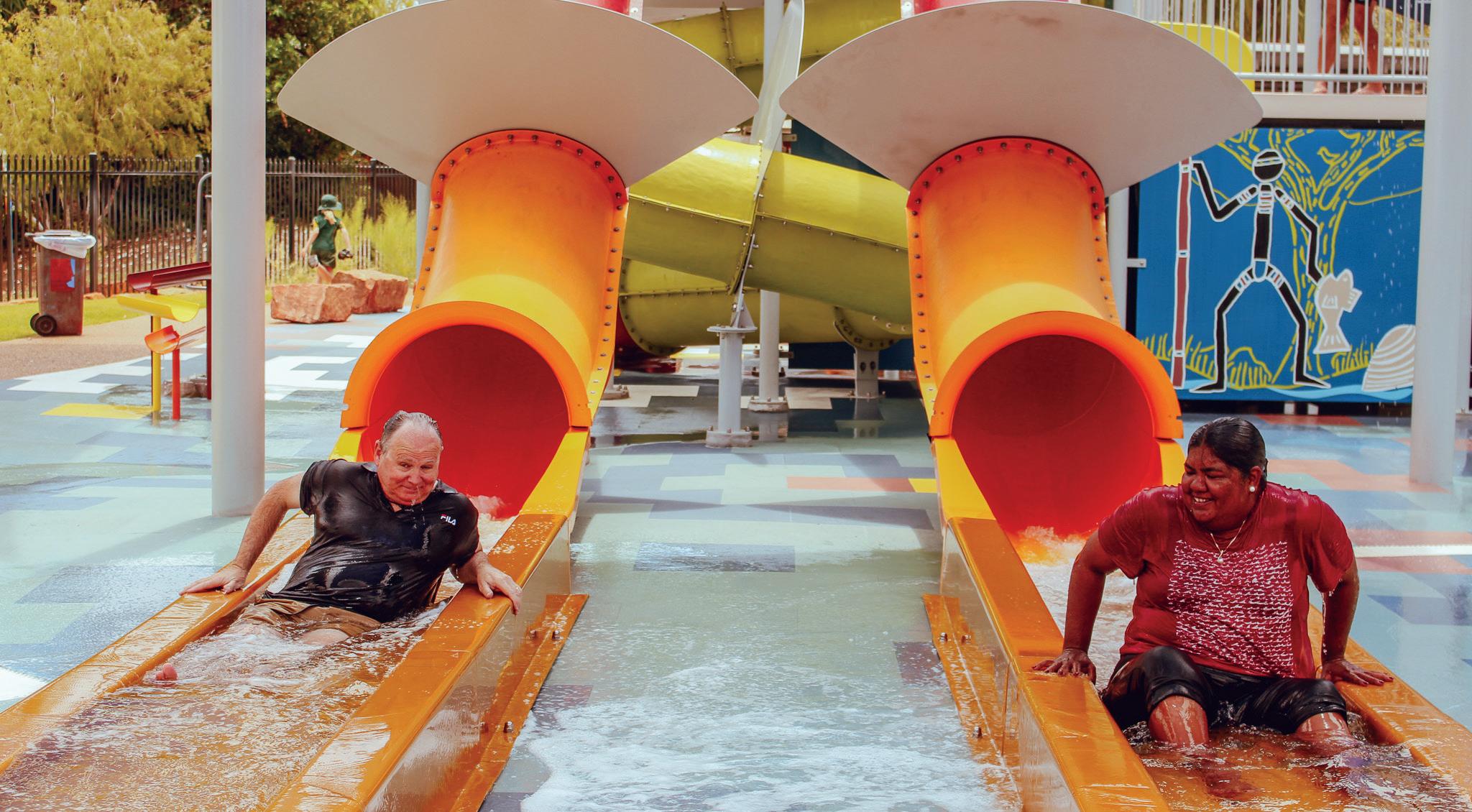
but outdated structures often fall short of modern safety standards. Know when to renovate and when to start fresh.
Also think carefully about your audience. Are you designing for toddlers, school-aged kids, teenagers, or all of the above?
And don’t forget the adult experience. Provide shaded seating, tables and good visibility so parents and carers can relax and supervise comfortably. A well-planned layout encourages family interaction and extends playtime.
Finally, working with a qualified play designer can help you navigate safety, compliance, accessibility and aesthetic considerations.
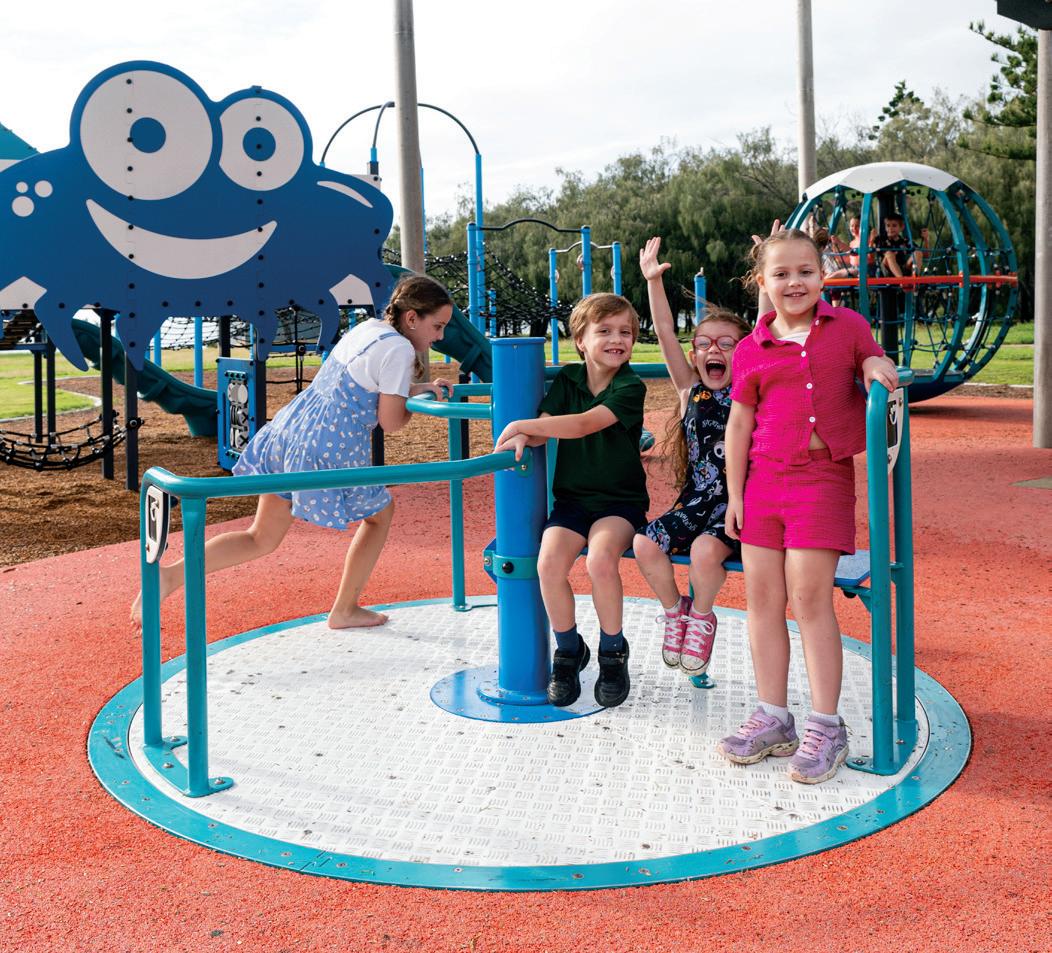
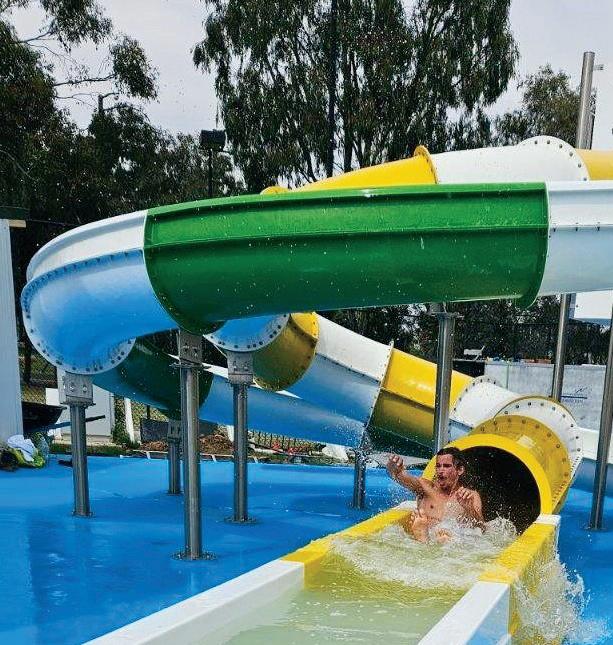
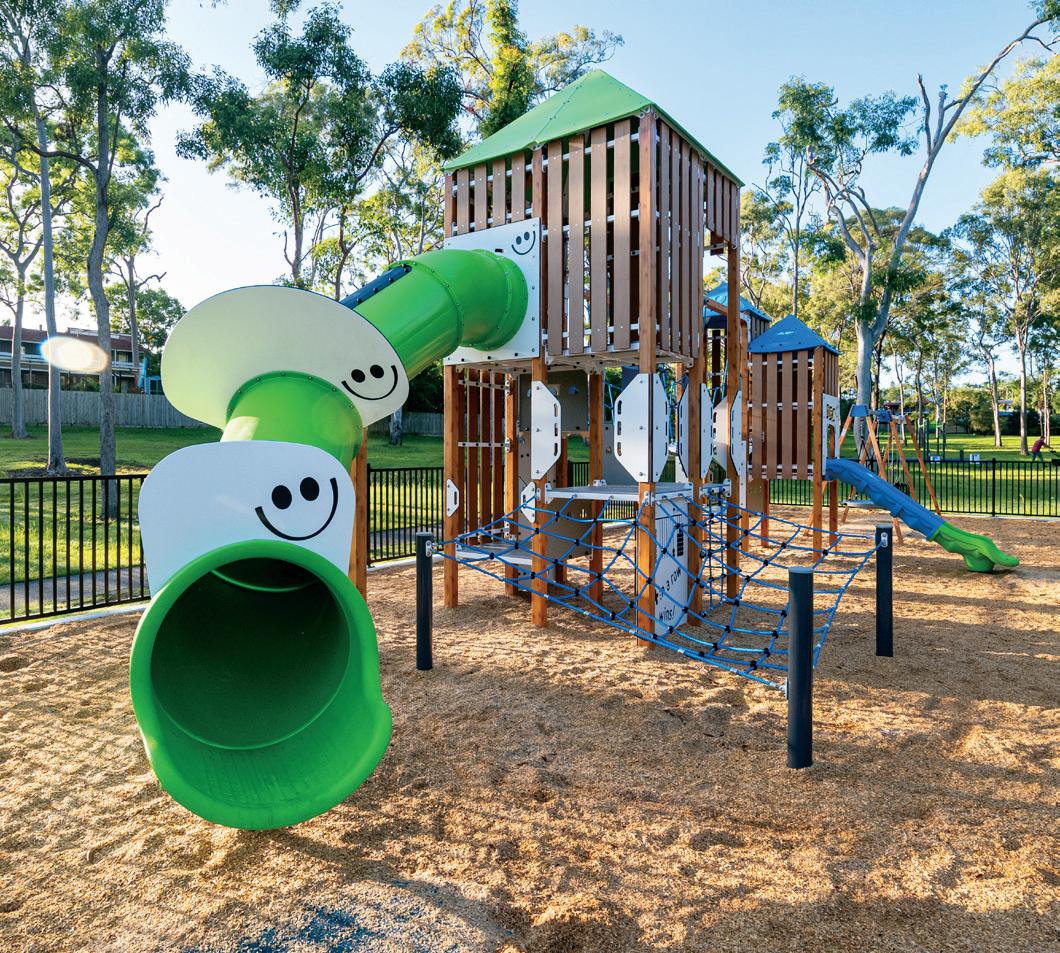
Images courtesy of Willplay
Images courtesy of Australian Waterslides
Cut above:

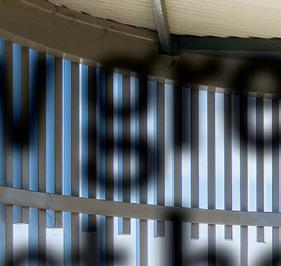
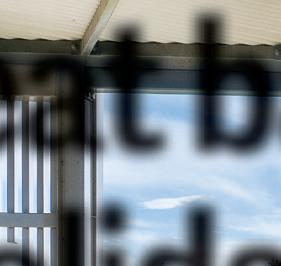
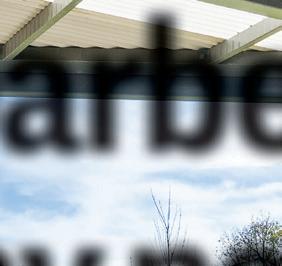
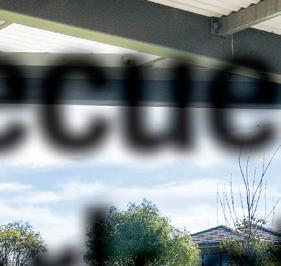
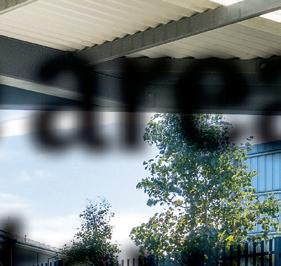
How great barbecue areas boost holiday park stays


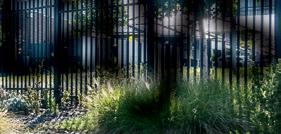
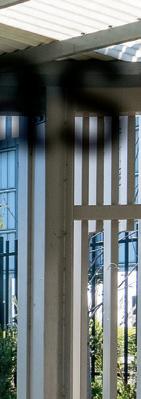
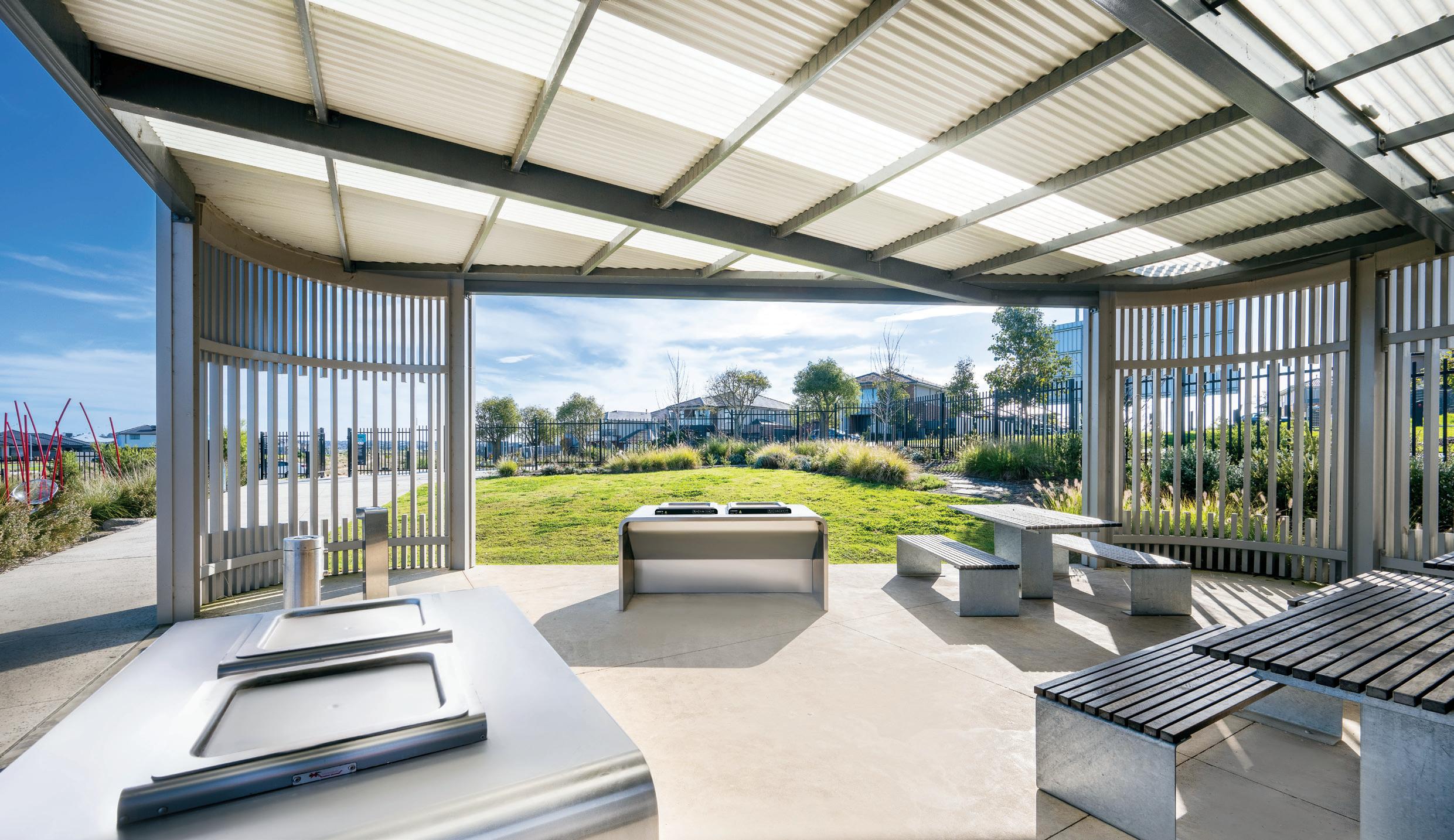
By Sarah Davison, Industry Reporter
Whether it’s the smell of sizzling sausages under the stars or a big breakfast fry-up with all the trimmings, outdoor cooking is part of the magic of a classic Aussie holiday park stay. With that in mind, communal barbecue areas and camp kitchens aren’t just about feeding hungry travellers—they’re about bringing people together and creating memorable moments. For many, they’re the heart of the stay: a place to chat with neighbours and catch up with friends and family.
More than 15 million domestic caravan and camping trips were taken across Australia in 2023, according to Tourism Research Australia, with over half spent in commercial parks and campgrounds. For many guests, the quality of a park’s facilities—especially communal cooking spaces—can play a big role in deciding where to stay.
And it’s not just about having a barbecue; it’s about how the whole space feels. In shared
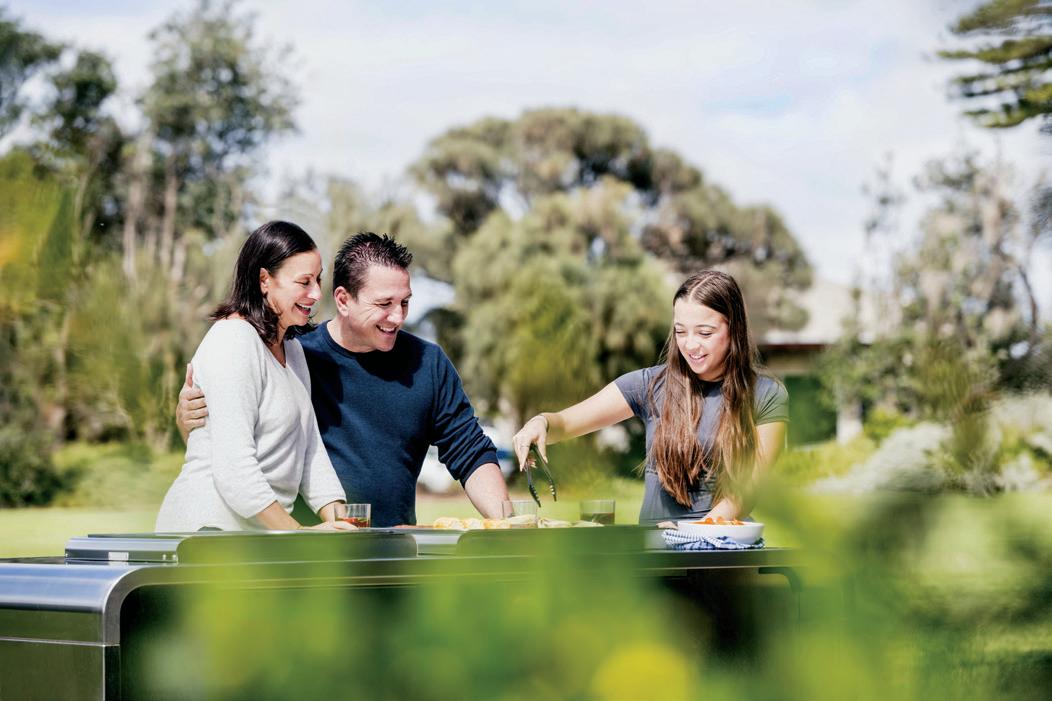
areas, hygiene and upkeep are front of mind. Guests notice when everything is clean, tidy and ready to use—and they care when it’s not. A spotless prep bench, a working sink with soap, and clean cooking gear might seem like small touches, but they leave a big impression.
Today’s travellers want more than a rusty hotplate under a tin roof. A few thoughtful touches can go a long way. Facilities that are weatherproof, easy to clean, well-lit and carefully designed make all the difference. Add energy-efficient appliances, clear signage and comfortable seating, and suddenly the humble barbecue becomes a highlight of the stay.
For operators, investing in modern outdoor cooking
spaces doesn’t just lift the guest experience—it can build positive word of mouth, boost reviews and encourage return guests.
To learn more, AccomNews caught up with Paul Conradie, head of sales at DA Christie, to explore what goes into creating outdoor cooking facilities that guests remember—for all the right reasons.
What are some of the key elements caravan park operators should consider when designing or upgrading their outdoor cooking facilities?
Paul Conradie: Accessibility, reliability and durability are top priorities. Barbecues in parks must withstand heavy use and all kinds of weather. Select equipment that offers value for
money with proven reliability, commercial-grade components and minimal maintenance.
Ease of cleaning is also essential when you have a short window between guests. Complicated attachments, grooves that trap food and awkward corners are all difficult to clean efficiently.
Operators should also think about placement. The barbecue area needs to be easily accessible but positioned to minimise smoke drifting into nearby cabins or caravans. Shade, lighting, waste bins and nearby seating are must-haves. It’s also important to factor in adequate power and water supply during early planning.
What innovations are you seeing that make outdoor cooking safer, easier to maintain and more hygienic for guests?
Paul: We’re seeing a steady shift away from gas toward fully electric barbecues with built-in temperature controls and safety features. These reduce the risk of fire or injury from open flames and require less upkeep.
A sterilisation cycle with auto shut-off eliminates bacteria on the cooking surface. Onetouch ignition, cabinets with integrated cleaning systems and sloped hotplates that channel fats into concealed catch trays are also becoming standard.
Images courtesy of DA Christie
Accessibility, reliability and durability are top priorities
Materials matter, too. Stainless steel is the most durable, versatile and hygienic material for cabinets and accessories. Always check that cooking surfaces are made from a high-performance stainless steel alloy such as 4622 grade, because lower grades are poor heat conductors.
How critical is layout and accessibility when planning communal cooking areas, and what design choices can help ensure these spaces are inclusive and easy to navigate for all guests?
Paul: Very critical. A poorly laid-out barbecue area can be a source of friction rather than enjoyment. Every guest should be able to move through the space safely, whether they’re using a mobility aid, pushing a pram or carrying a tray of food. At a minimum, that means clear, non-slip pathways and adequate turning spaces.
Avoid crowding too many barbecues into one area—
space them so multiple groups can cook comfortably at the same time. Good lighting, clear signage and shelter from sun or rain all go a long way to creating an inclusive, accessible cooking experience.
In your experience, how do outdoor cooking facilities contribute to guest satisfaction?
Paul: They’re a big drawcard. Welldesigned cooking areas become social hubs. They give travellers a chance to meet, swap stories and feel part of the travelling community. A clean, easy-to-use barbecue shows that the owners value quality and guest comfort.
On the other hand, a poorly maintained or broken facility can quickly put people off. For many guests, especially those travelling with kids or on longer road trips, the chance to cook a simple meal outdoors in a relaxed setting is a key part of the holiday experience. When it works well, it leaves a lasting impression.
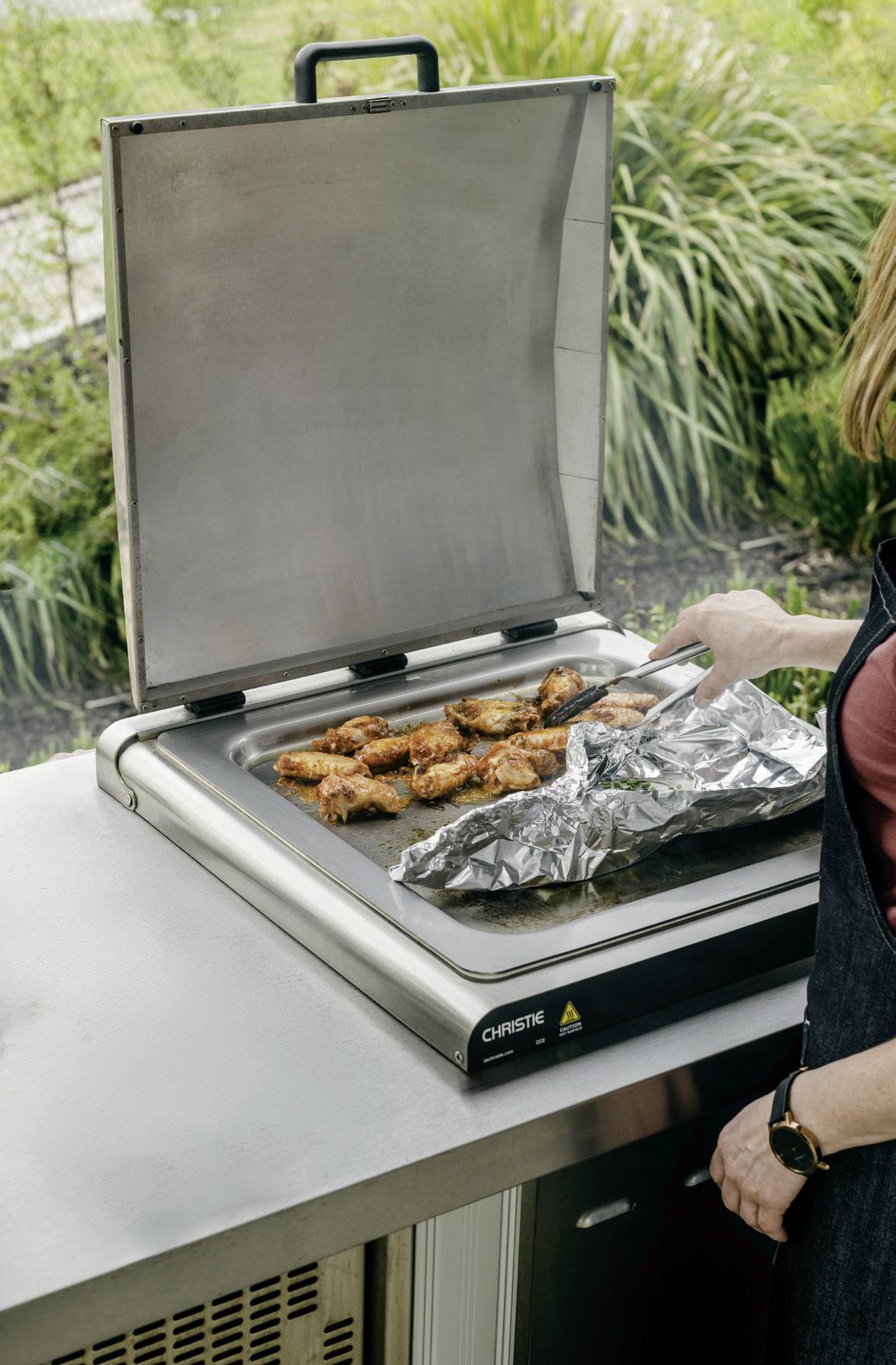
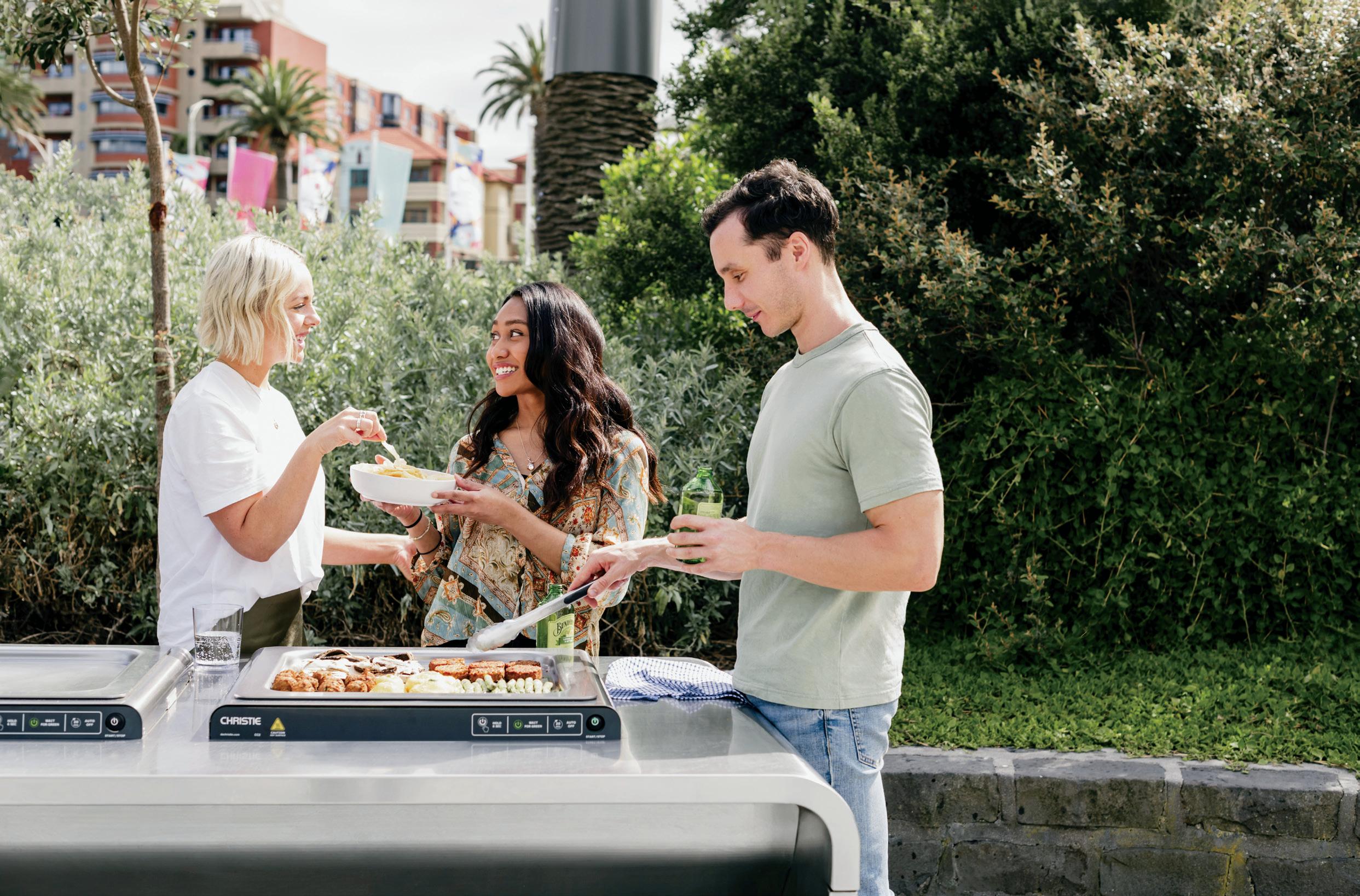
Images courtesy of DA Christie
Future-proofing the caravan and leisure sector
Australia’s caravan and holiday park sector is changing fast. What was once the domain of budget-conscious travellers has evolved into a vibrant, competitive industry delivering higher standards, more variety, and broader appeal. Expectations are rising, and so are the opportunities for operators ready to invest in quality.
At the 2025 Australian National Caravan Industry Conference, the message was clear: futureproofing the sector means more than keeping pace with guest demands. It means adopting new technologies, improving operational efficiency, and delivering spaces that meet the needs of a modern, diverse customer base.
Travellers aren’t just looking for a place to park. They want a complete experience, and they’re choosing caravan parks as their preferred holiday destination.
Today’s guest wants a park that feels purposeful. The modern park visitor expects clean, safe, and thoughtfully designed environments. They notice the quality of the amenities. They value well-maintained, functional spaces and remember the little things. Small touches that make their stay easy, welcoming, and memorable.
That’s where detail matters most. Future-proofing isn’t just about expanding or renovating. It’s about making strategic choices. Some of the most powerful changes come from upgrading the spaces guests use every day, especially communal areas like outdoor kitchens and barbecues.
These spaces aren’t just convenient. They help shape the character of the park. They’re where people gather, relax, and connect with others. Done
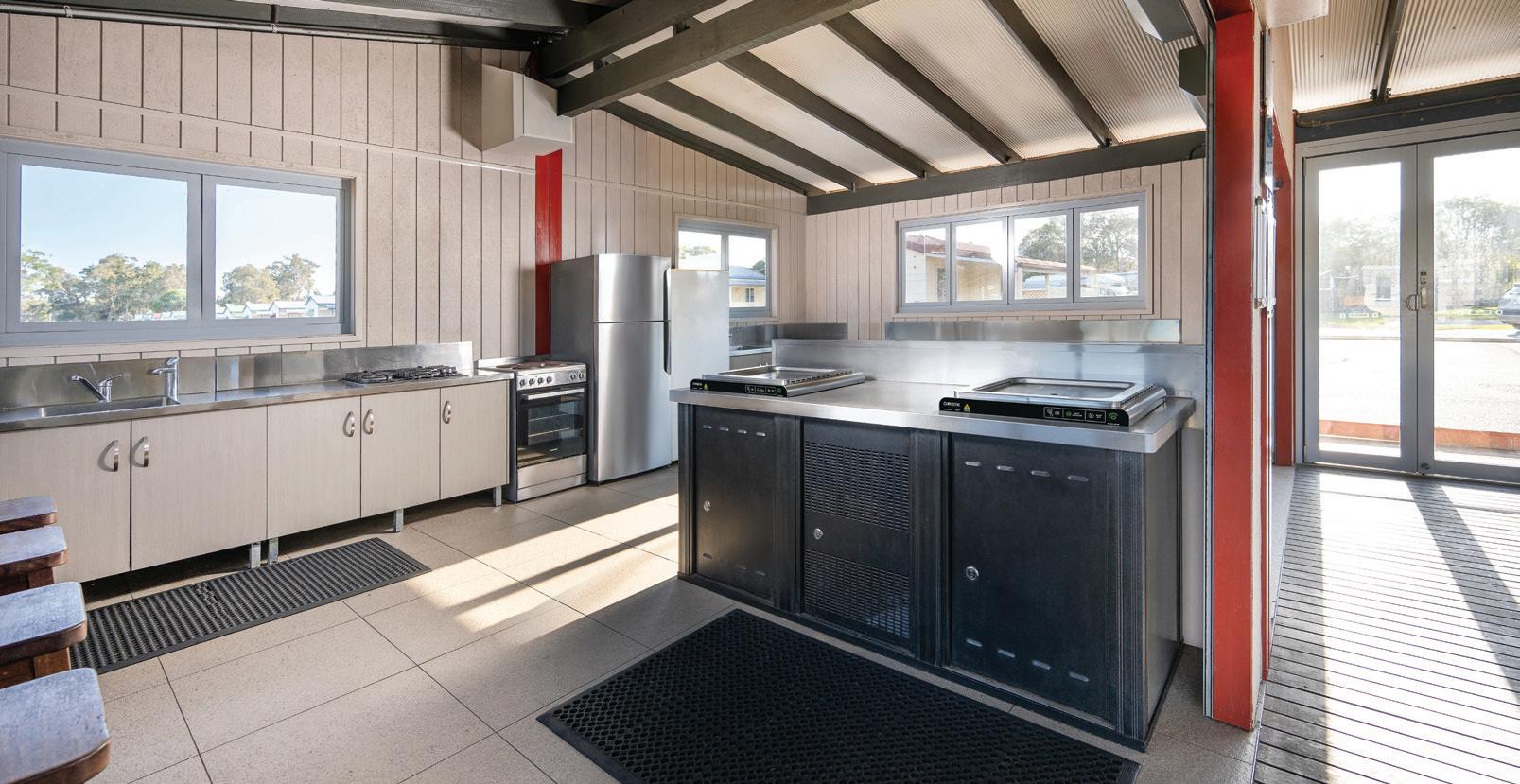
well, they become a highlight of the stay - something guests talk about and return for.
One name that frequently appears in discussions about park infrastructure is Christie Barbecues.
Long trusted by local councils and public facility planners, Christie has earned a reputation for quality, reliability, and after-sales support. Over the years, they’ve become a key supplier to the leisure and accommodation industry, helping parks across Australia and internationally improve the design and performance of their shared cooking facilities.
So why are so many operators turning to Christie?
First, their products are built for the realities of communal use. Parks need equipment that is easy to use, can withstand constant wear and tear as well as Australian weather conditions, and still provide a reliable and safe cooking experience. Christie barbecue units are built with high-grade materials and innovative engineering to do just that. Their barbecue products are made to last and to perform, day after day.
Second, Christie’s designs are
inclusive. Accessibility is no longer a “nice to have”, it’s an essential part of creating a welcoming environment. Christie barbecues are built for universal accessibility, making them easy to use for people of all ages and abilities. This aligns with growing expectations around inclusivity and is becoming a key factor in guest satisfaction.
Third, they support operational efficiency. One-push functionality, full-surface heating, and stainless-steel construction make Christie barbecues lowmaintenance and easy to clean. That’s a significant plus for parks dealing with limited staff and rising maintenance costs. When equipment functions properly and requires minimal maintenance, it frees up time and reduces stress throughout the operation.
That’s what makes investments like this strategic. Offering multiple accommodation options might attract guests, but it’s the overall experience that keeps them coming back. And that experience is built across many touchpoints, from reception to the shared kitchen. When guests feel that every part of the park has been thoughtfully considered, it boosts trust, comfort, and satisfaction.
Shared cooking spaces have a high impact. They’re often one of
the first places guests go after setting up and one of the last they use before leaving. When these areas are clean, functional, and aesthetically pleasing, they reflect well on the entire park. It shows that the operator understands what their guests value and is prepared to invest accordingly.
After 60 years in the business, Christie Barbecues understands the pressures park operators face. Their products are designed to suit a wide range of parks and budgets - from basic, no-fuss setups to premium destinations. That flexibility means operators can upgrade with confidence, knowing they’re getting products that perform and last.
In today’s tourism market, reputation is everything. With more choices than ever and reviews influencing travel decisions, operators can no longer afford to overlook the details. Infrastructure is no longer just about functionality - it’s part of the guest experience.
Smart, guest-focused design is now a business essential.
Operators who understand that and who choose the right partners are positioning themselves ahead of the curve.
And in many cases, Christie Barbecues is helping them get there.
Image courtesy of DA Christie
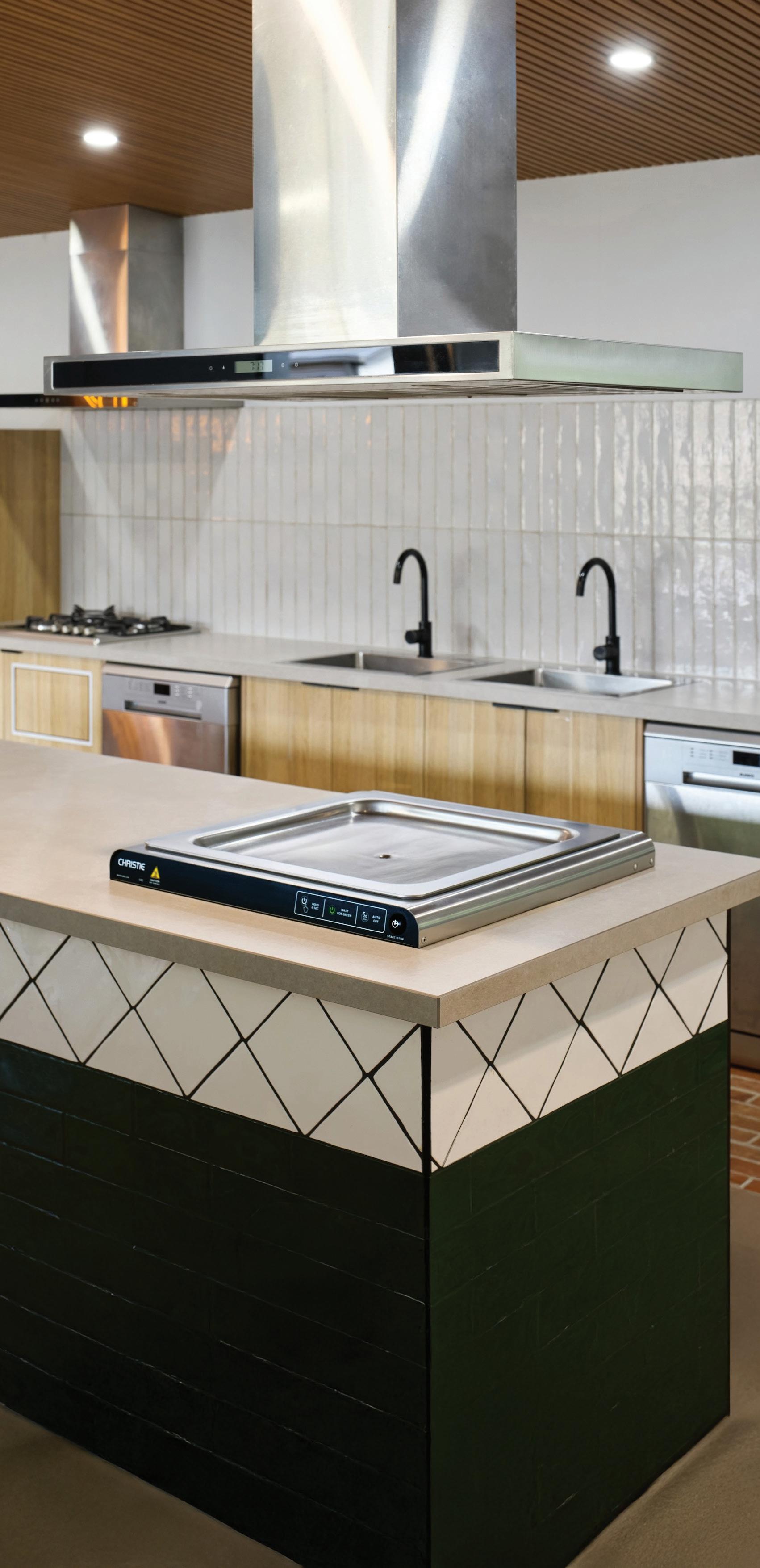
Flexibility and Performance
Christie’s award-winning electric and gas cooktops are powerful, energy-efficient, and easy to use and clean. The ultimate cooking appliance, the drop-in design makes them ideal for prefab or bespoke cabinets, offering future-proof flexibility for any camp kitchen or holiday cabin upgrade.
BIG4 Yarra Valley Park Lane Holiday Park, Victoria





